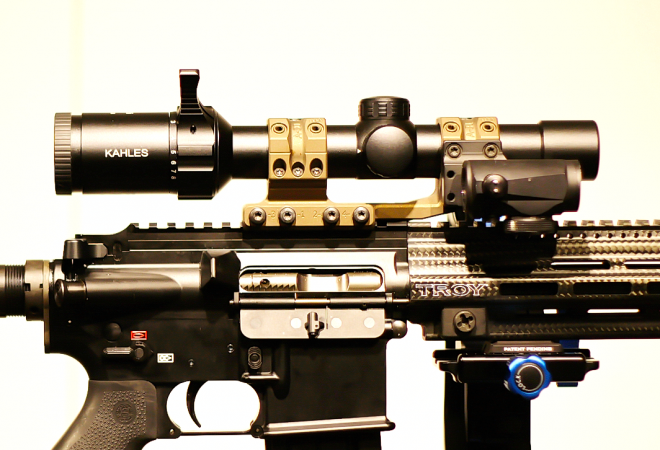I have been competing in IPSC Rifle for about ten years now. I’ve had some success with some medals and places on the podium. For instance at both IPSC Rifle World Shoots in the manual action division, including a Gold Medal for the team win.
The importance of a good optic behind any success in these types of competitions should not be underestimated. For practical style shooting the Low Power Variable Optics (LPVO) shine, and I can assure you that the top competitors do their best to chose wisely.
History & Background
After some initial trials with low-end optics, I bought a Swarovski Z6i 1-6×24, and even if this riflescope is now ten years old it still amazes me with its quality. When the 8 power optics started shipping, I jumped to the Zeiss V8 1.1-8×30 and this is what I use at the moment.
However I never stop looking for alternatives, it’s an endless search for perfection. I’ve had the Kahles K18i as a loaner from Kahles Austria for about two months now, and the first customer samples are just arriving in the market. IPSC and Kahles Optics recently entered a Global Partnership, so you can understand that the sports competition market is important for them.
Let’s take a closer look at the Kahles K18i with the IPSC reticle.
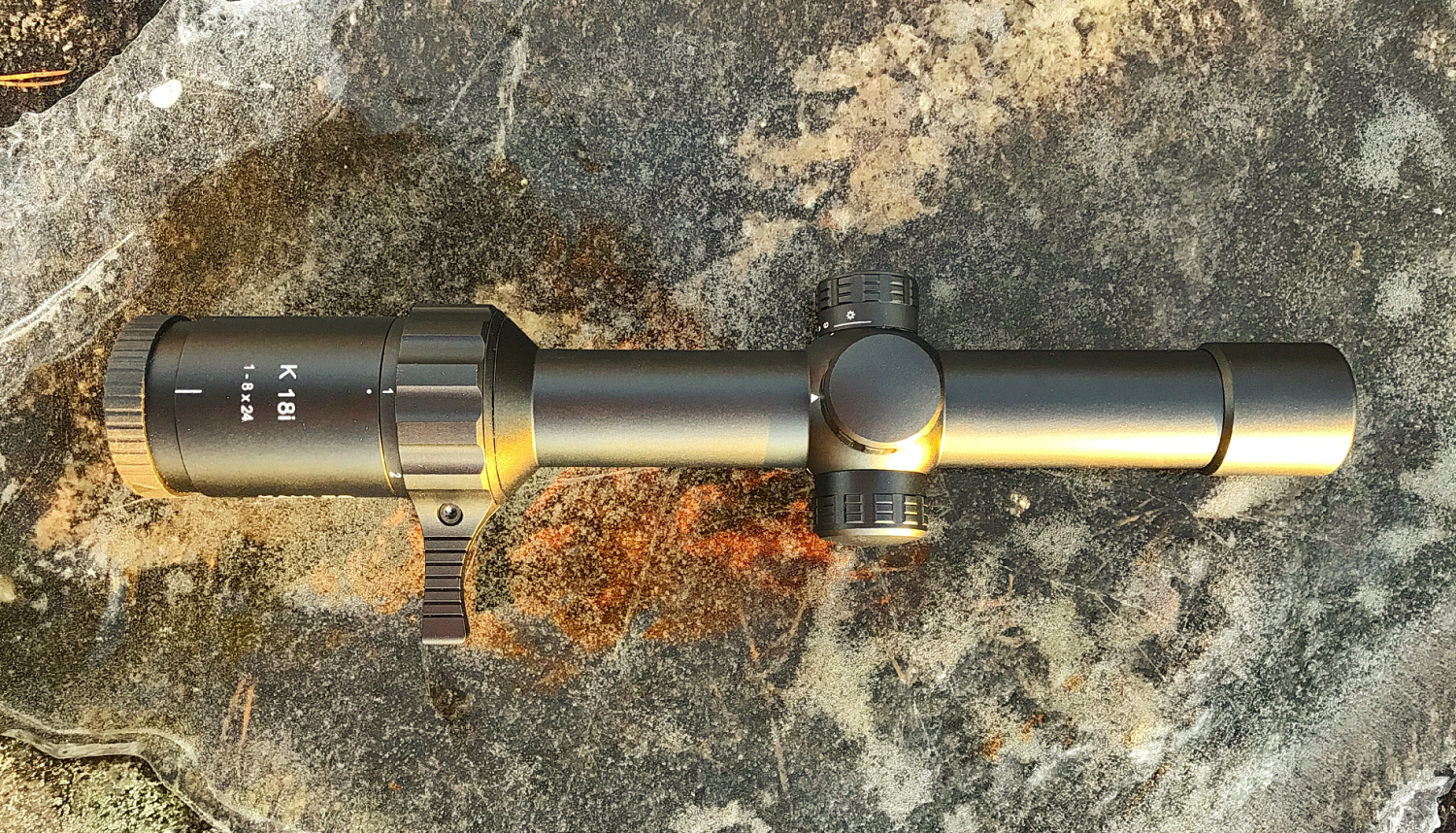
Looks, Size and Weight
The Kahles K18i has a very lean and slim design, streamlined. It’s like the designers at Kahles removed everything that wasn’t essential, and why not? Yet it feels very robust. The length is 300 mm and the weight is 555 grams.
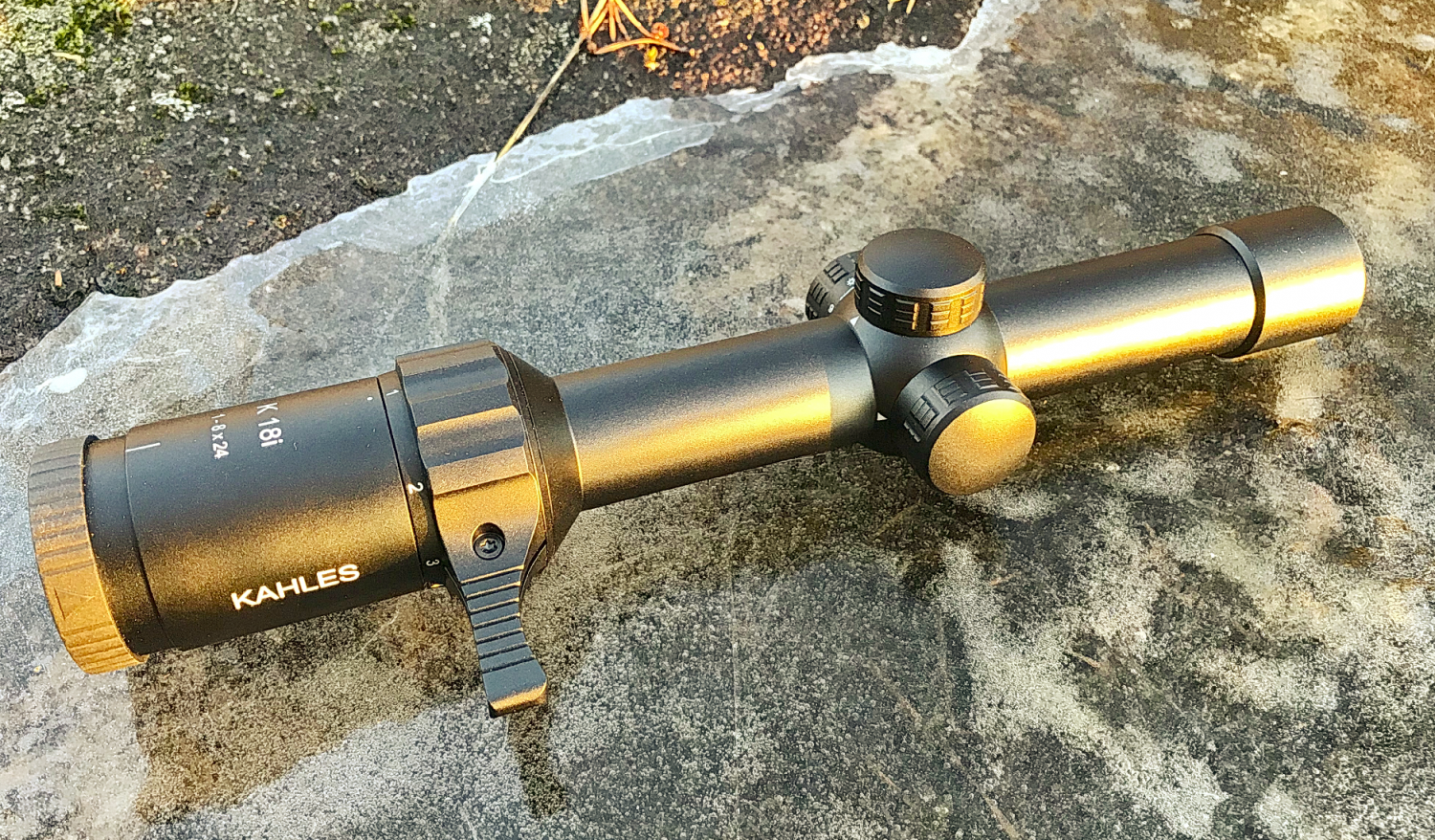
Magnification Ring with a throw lever
The K18i comes mounted with a throw lever, to make it easier to shift the magnification. There is another lever with a shorter tail (not shown here) in the package. They can both be individually positioned or removed completely. This is typically an aftermarket product, but nearly all competitors use them so it’s a nice touch that Kahles included them.
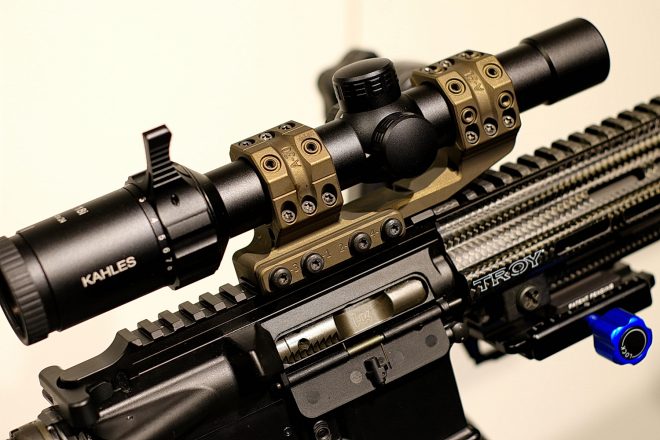
The Turrets
There are traditional turrets for elevation and wind. They are not designed to be shifted “on the fly” and there is no (optional) ballistic tower as with for instance Swarovski or Zeiss. The feel and “trust” in the clicks are just fine. The red rings are to protect the inside from dust and moisture. There’s a spare battery in the top of the cap.
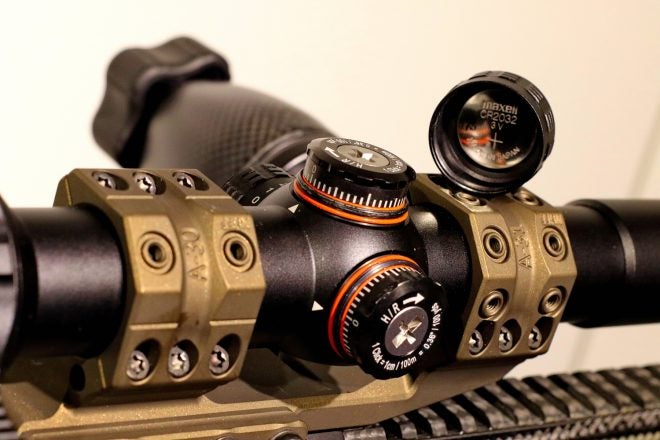
Illumination
On the left side, we find the adjustment for the illumination. This includes an extra bright day illumination in the 2nd focal plane. This is called MAX LIGHT for strongest backlight situations, and it is really bright.
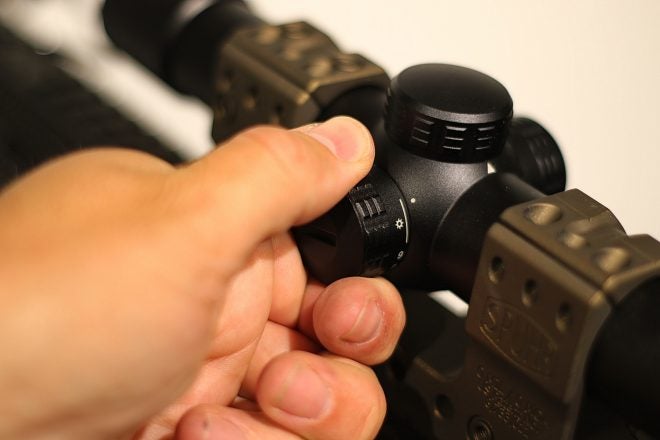
To have the possibility to have a function that goes beyond the maximum reminds me of the old movie Spinal Tap. It’s a movie about a hard rock band, and they used amplifiers that went up to eleven.
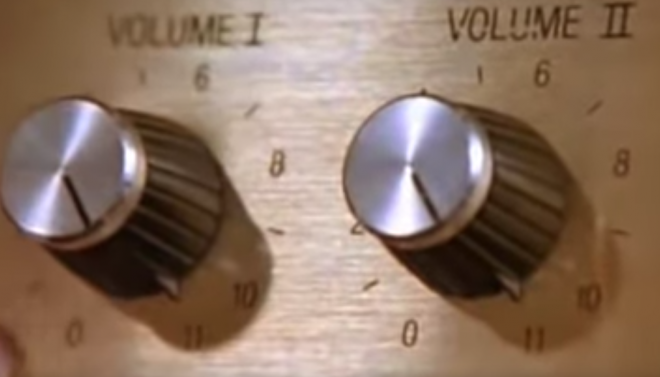
It’s not on the topic of the K18i, but still a hilarious moment in the movie history.
It’s virtually impossible to capture how bright the reticle can become, but it’s the brightest I’ve ever seen in a riflescope. Definitely desert sun proof.
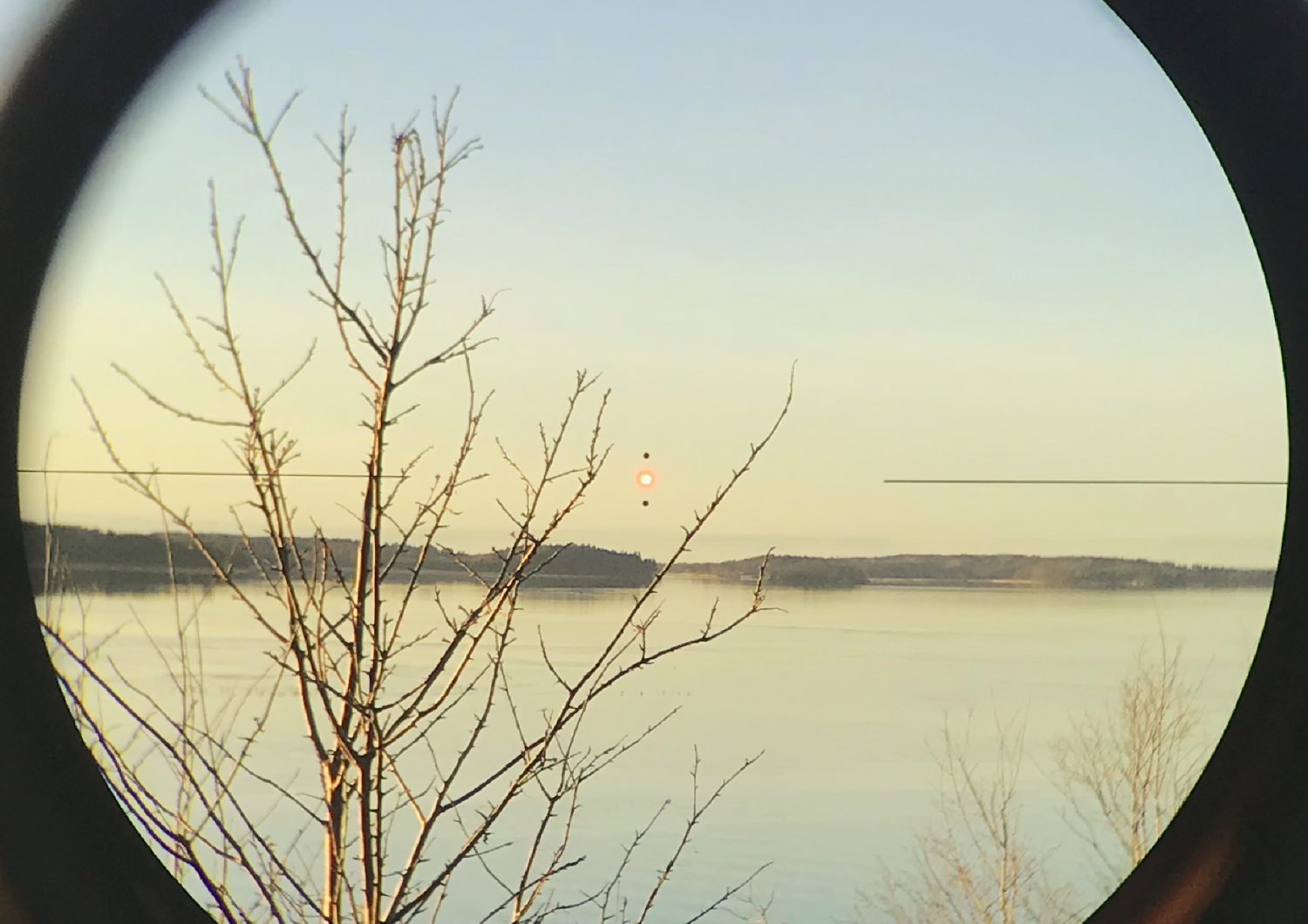
This is in winter, so far away from a hot day in Florida. Let’s pretend you’re starting a competition there and you have the sun almost directly into your scope, as you’re about to start your stage. The Kahles has an extremely bright dot if you push it up to the maximum. It’s hard to show this in a picture, your eye will see it differently. The dot will appear brighter.
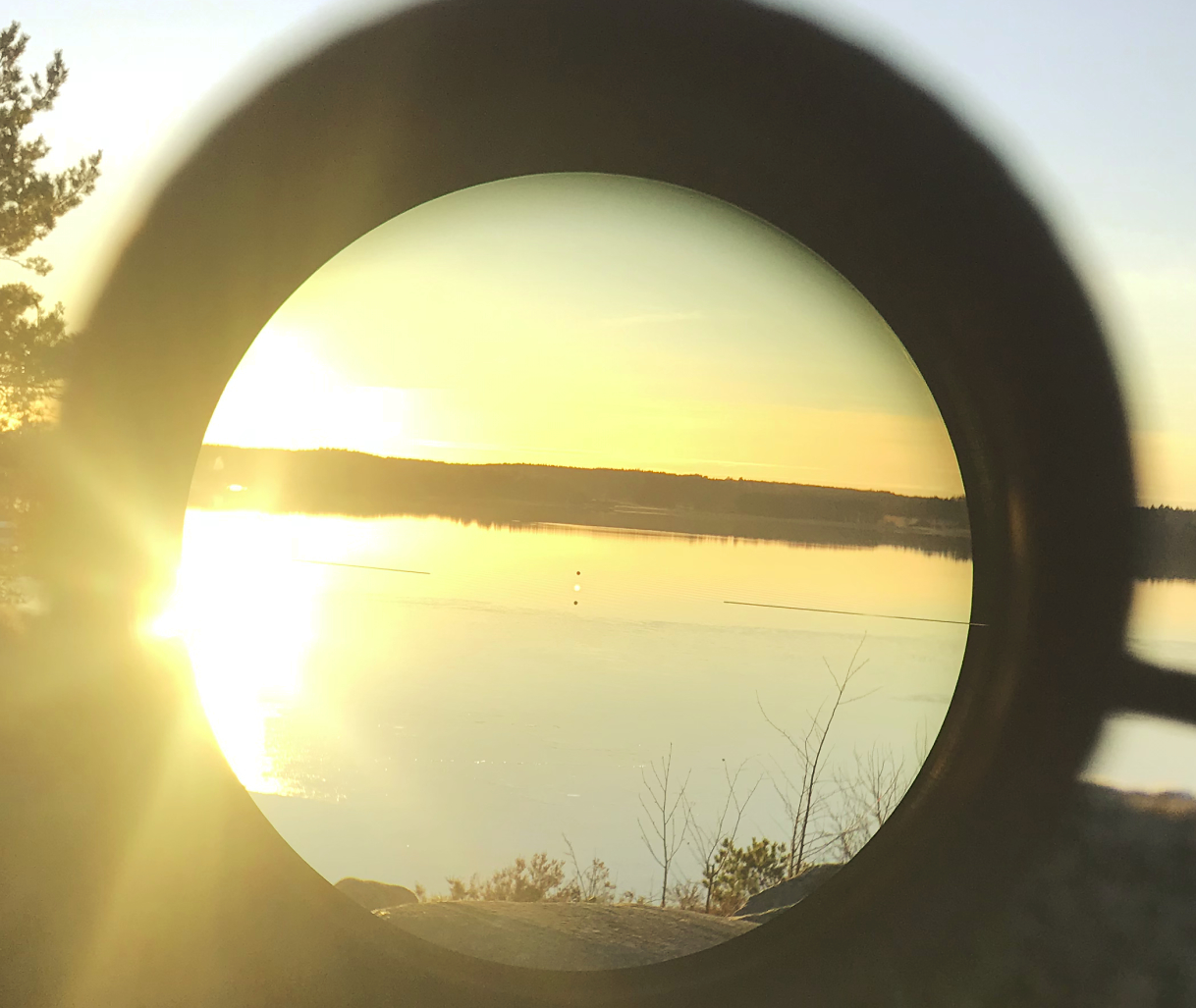
To compare, the Zeiss V8 and its dot cannot be pushed to the same brightness as the Kahles but still acceptable.
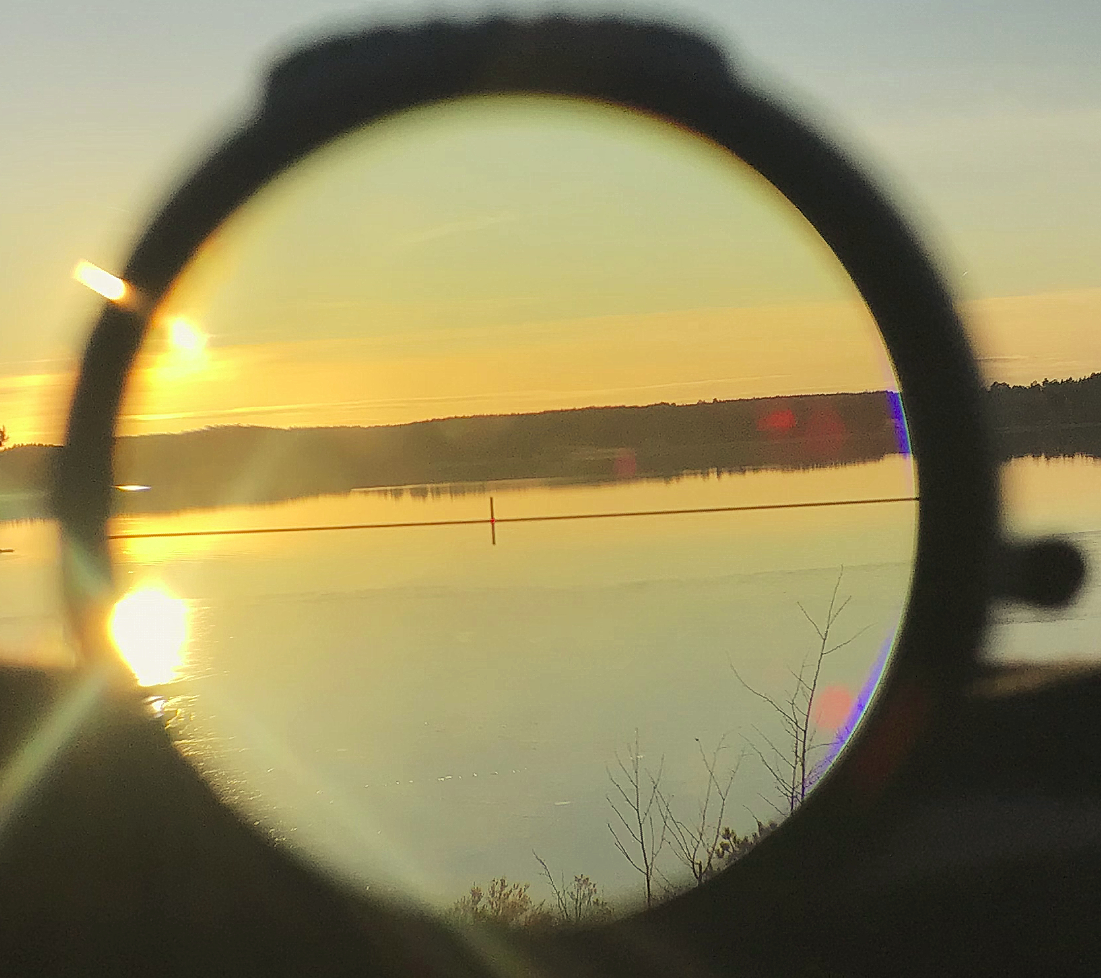
One person mentioned that while he was doing fast and wide transitions, the illumination appeared as pulsating. I haven’t been able to replicate this with my eyes, but when taking pictures the camera sometimes shows the dot as being off while it is, in fact, on. I don’t think this is a problem or anything to worry about.
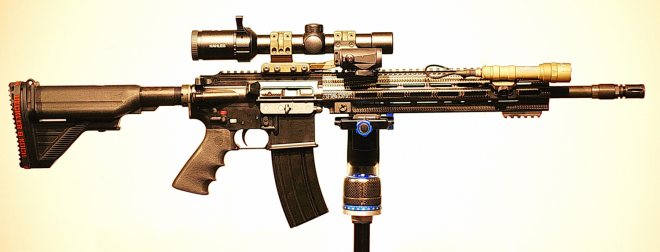
The Heckler & Koch MR223 on a Benro Gimbal GH5C Carbon Fibre head, Manfrotto tripod (outside picture). The HK has a Carbon Fiber handguard and sits with an ARCA RC2 MLOK connector from Shadow Tech LLC. Surefire light and side-mounted Aimpoint on the Spuhr mount.
Optical Performance – COMPARISON with similar riflescopes
Let there be no doubt that the Kahles K18i is one of the best Low Power Variable Optics on the market today. According to Kahles, the lenses are coated with OILPHOBIC. I’m not sure what it means, but I guess they don’t like oil.
Below you can find a comparison with some other popular competition/sports riflescopes.
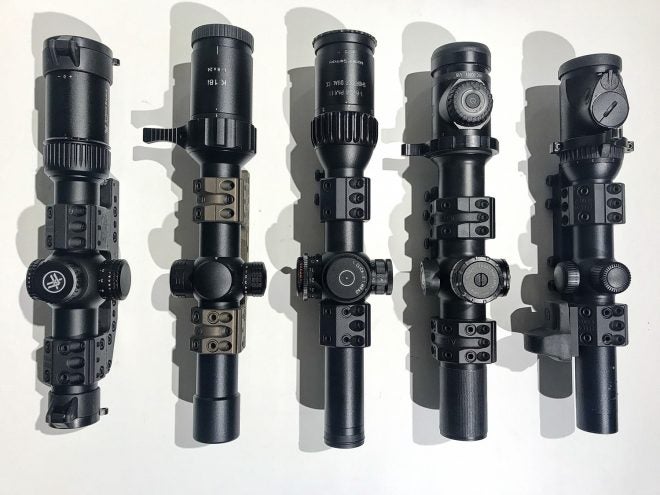
Below is shown the good “old” Swarovski Z6i with the BRT-I reticle with a nice small dot and hold-overs. This has got to be one of the best 1-6 power scopes ever and is still going strong as you can see. Every time I look into it I’m still amazed by the high quality of the lenses. The Kahles is similar, but with the possibility to go up to 8 power.
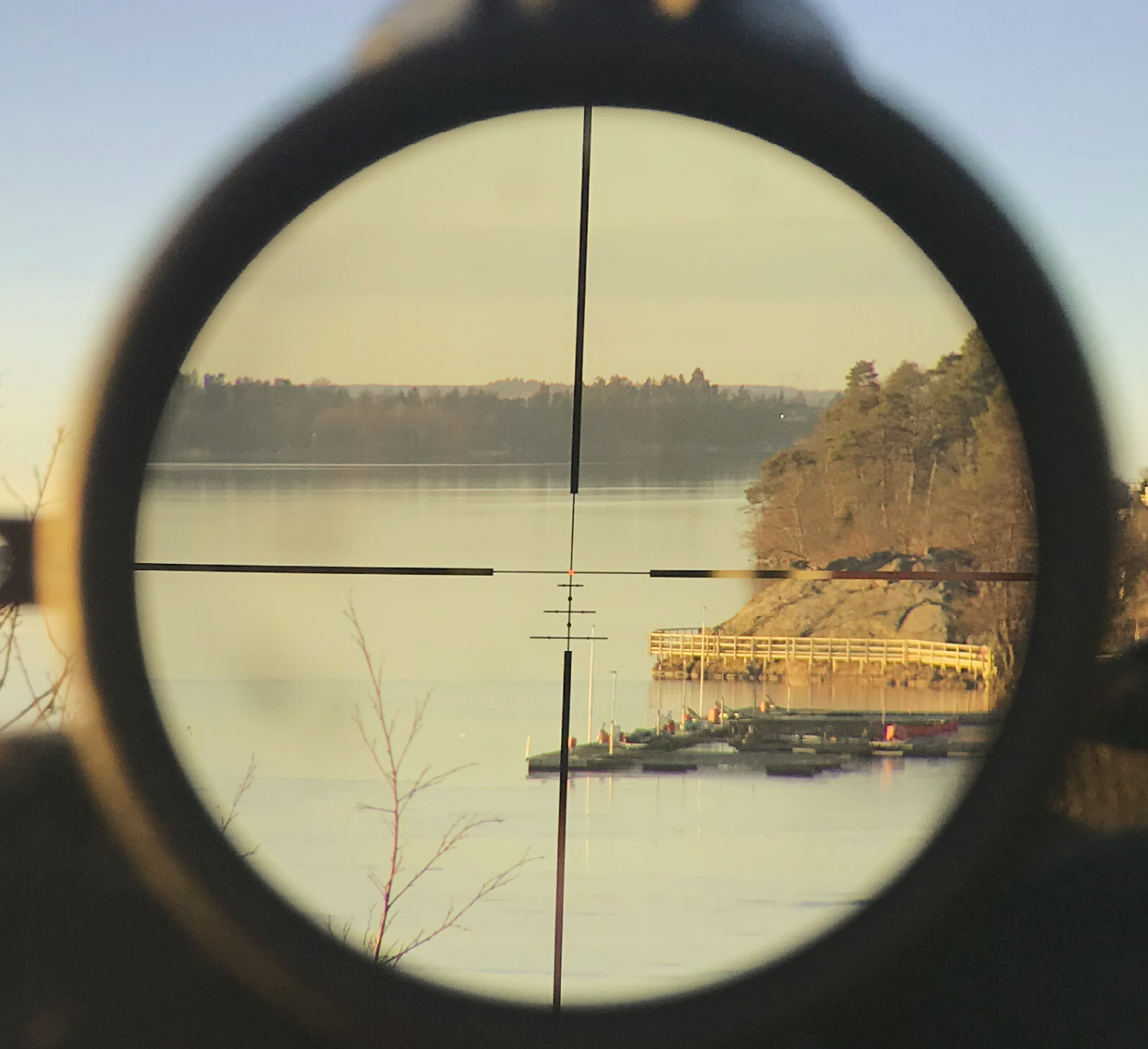
Swarovski Z6i Gen 2 BRT-I reticle
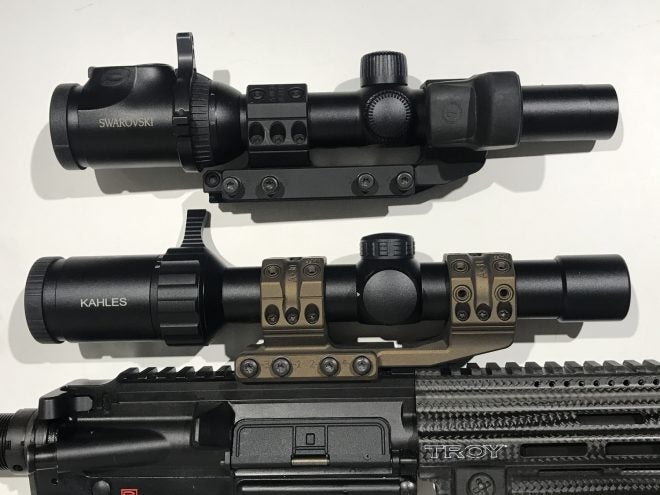
Kahles K18i versus Swarovski Z6i 1-6×24 (with Leupold Deltapoint on the side).
Here is the Vortex Strike Eagle 1-8x. 450 meters to the pier. As you can see the tube is quite thick, much thicker than the other scopes shown here. This is a low-cost optic, but it can still perform pretty well.
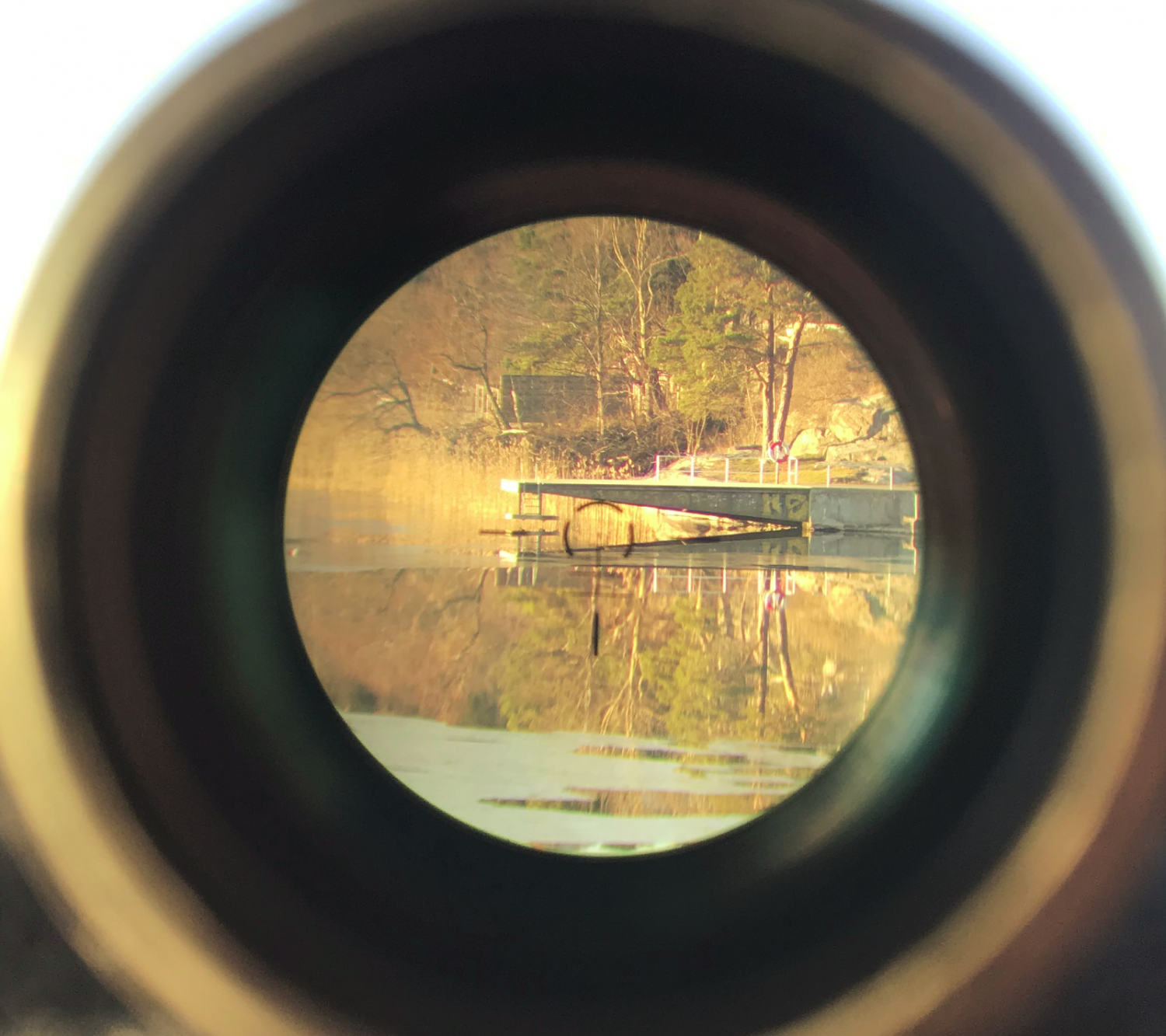
Vortex Strike Eagle 1-8x
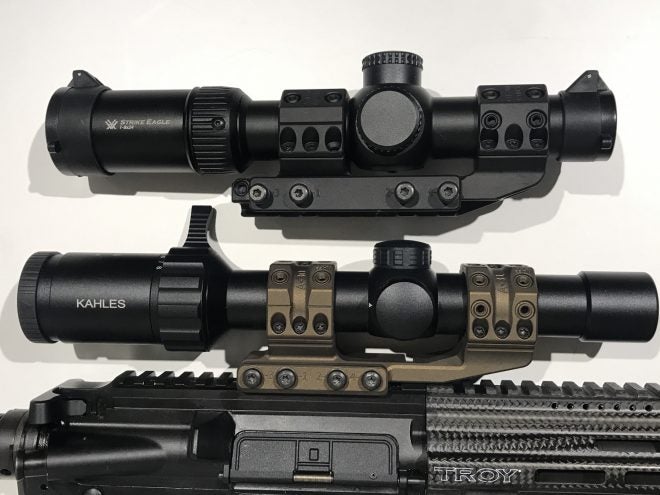
Kahles K18i versus Vortex Strike Eagle 1-8x
Below: The Kahles K18i. As you can see it has warm colors, with a lot of yellow and red. I know this picture has a lot of reflections in it, but I found it hard to find the reticle and the center of the scope, due to its thin horizontal lines. Kahles K18i at 6x power (the frequency of the illumination versus the camera sometimes make the dot appear as it’s off. This is nothing you would have to worry about.)
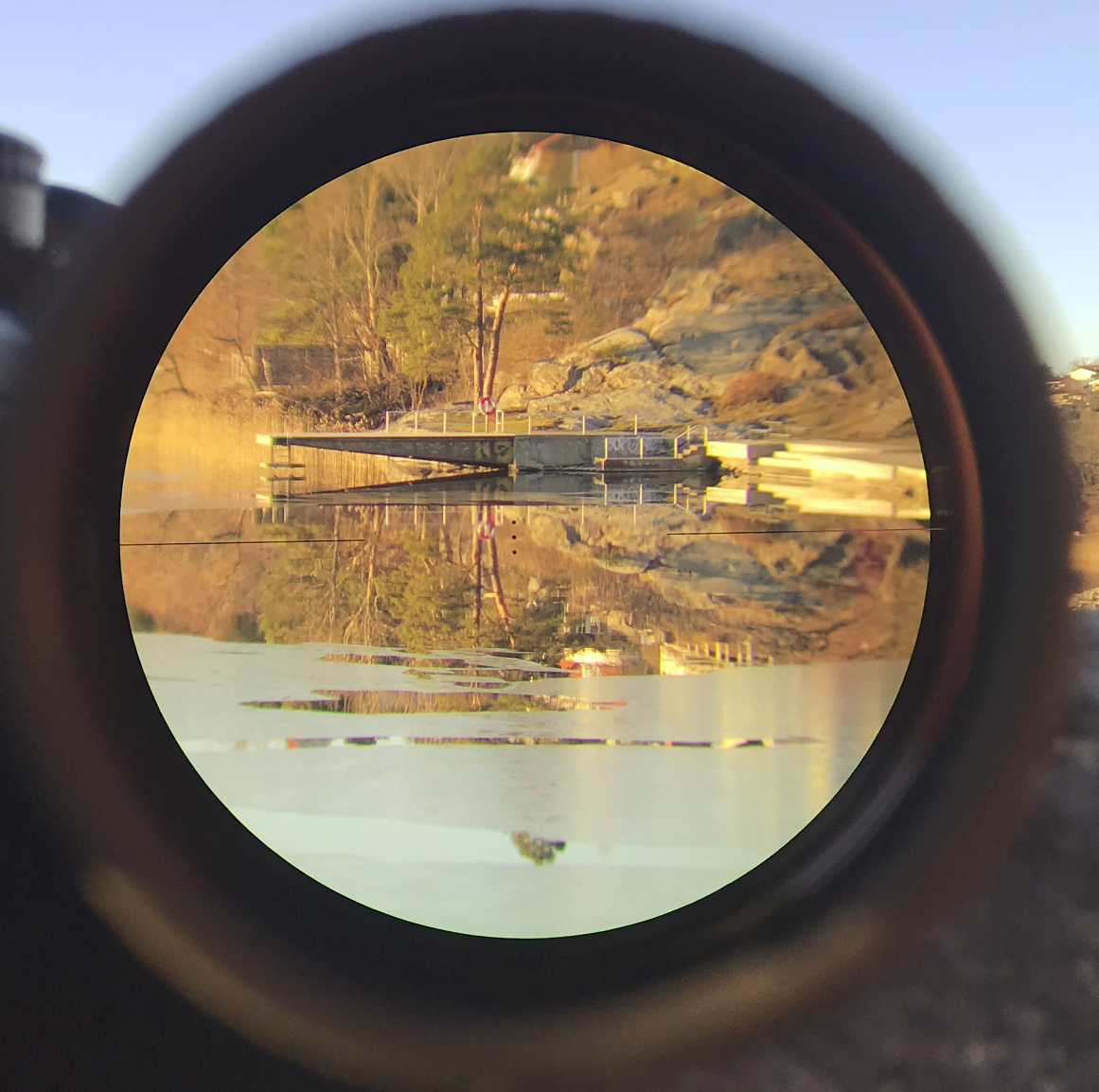
Kahles K18i at 8x power with the dot on. There is ice in the water, and the sun is coming in from low and the left.
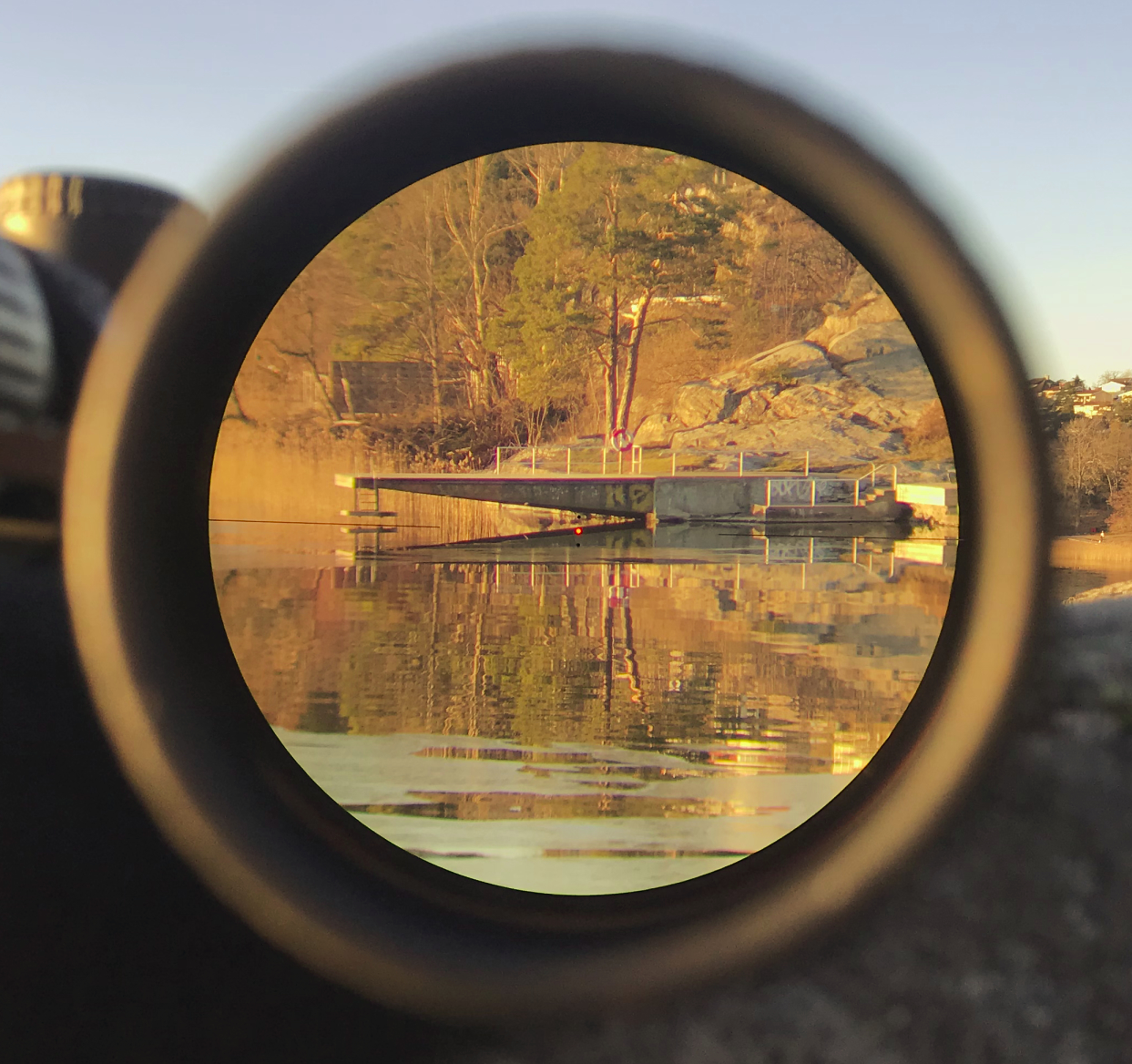
Another picture taken at another day and time.
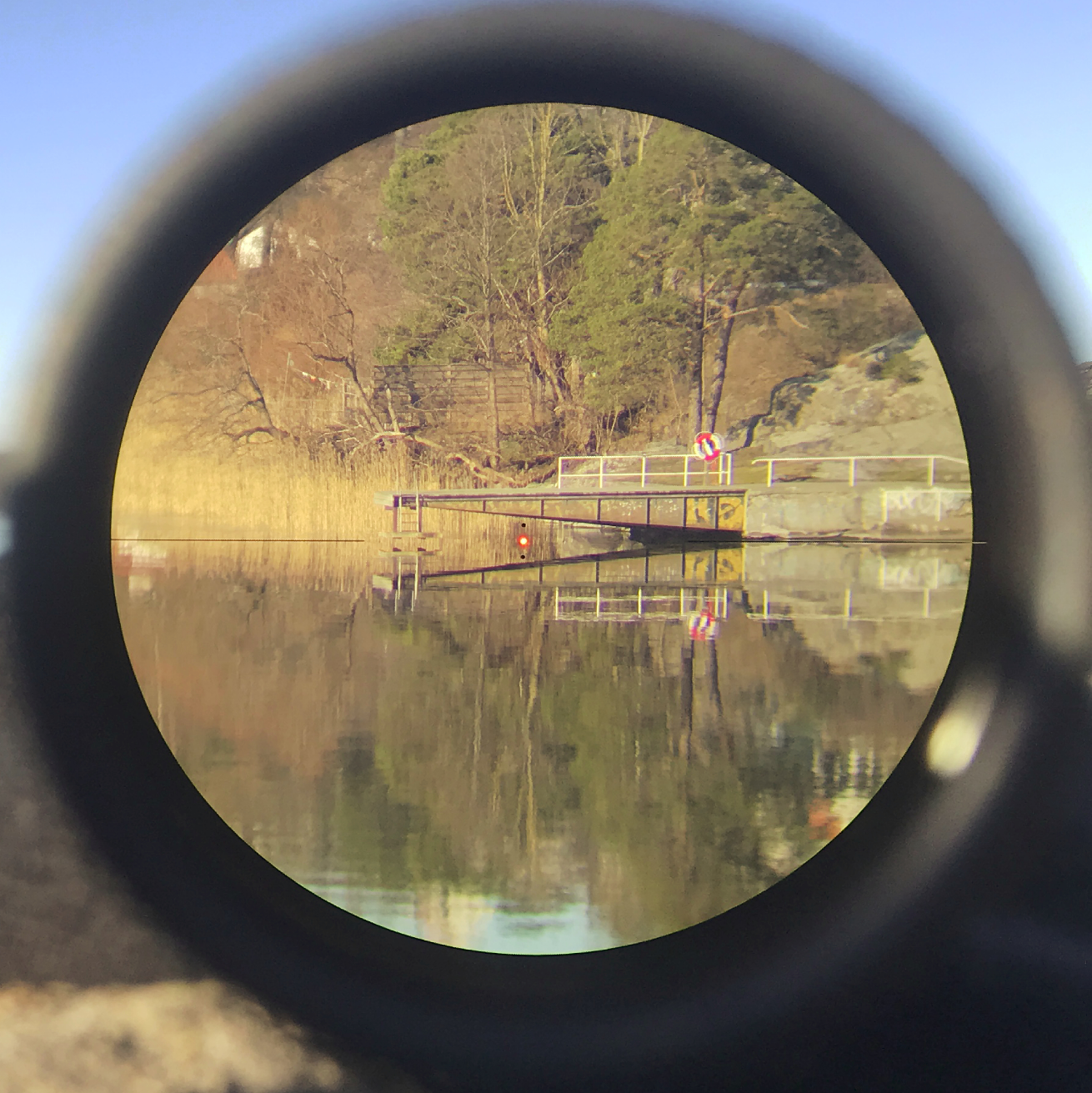
Below: Reference with the Zeiss V8, which seems a bit tenser, with more blue and gray. It is easier to find the X and Y axis here. Notice the thin ice in the water.
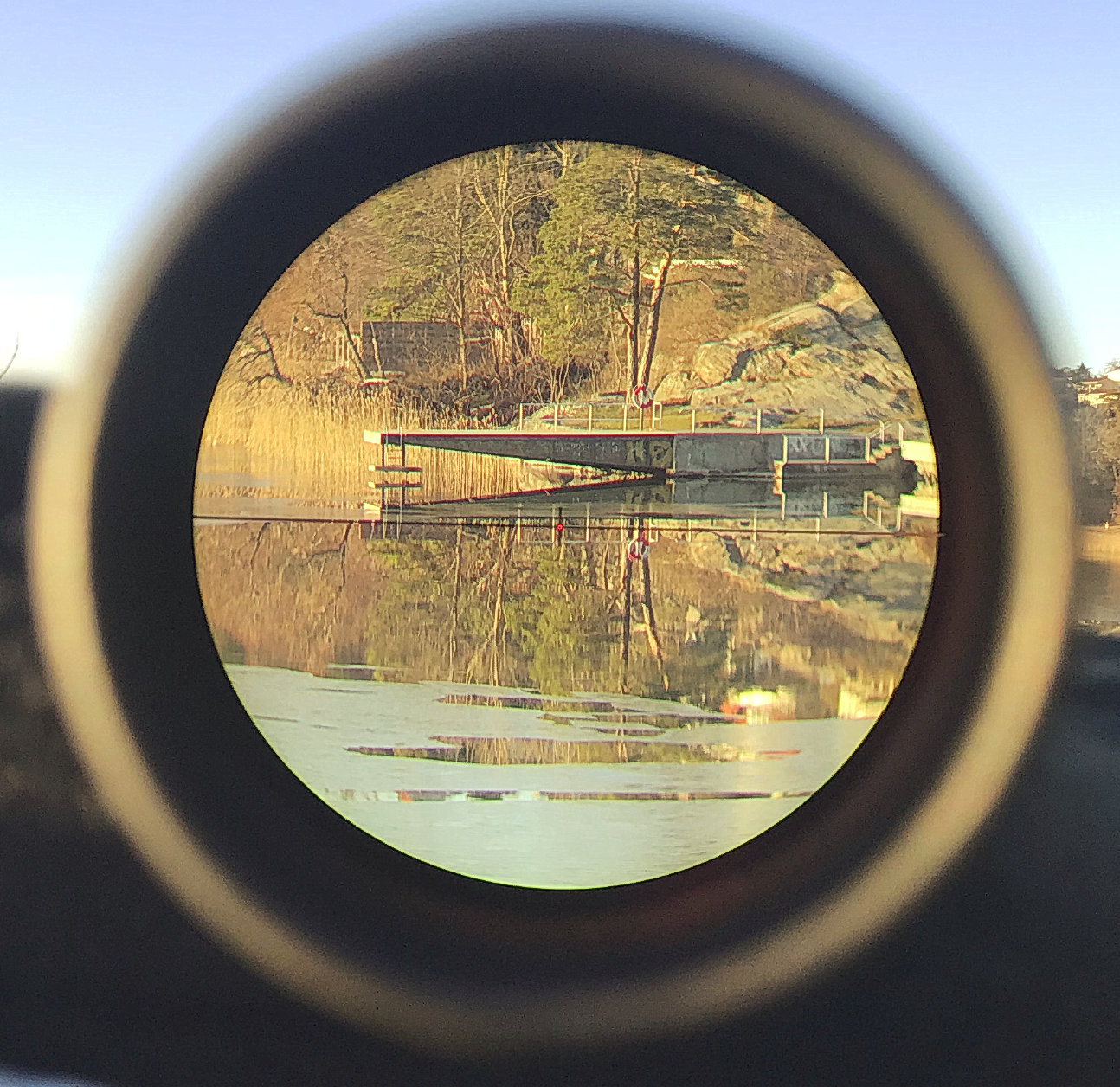
Zeiss V8 1.1-8×30
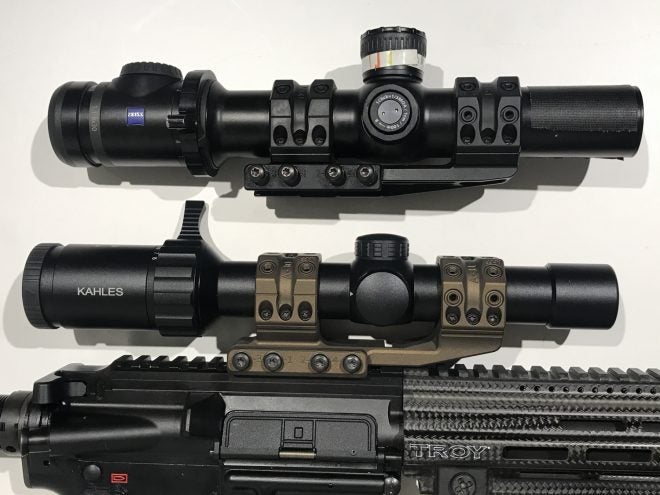
Kahles K18i versus Zeiss Victory V8 1.1-8×30 (36 mm tube). The Zeiss has an optional ballistic tower and a custom throw lever.
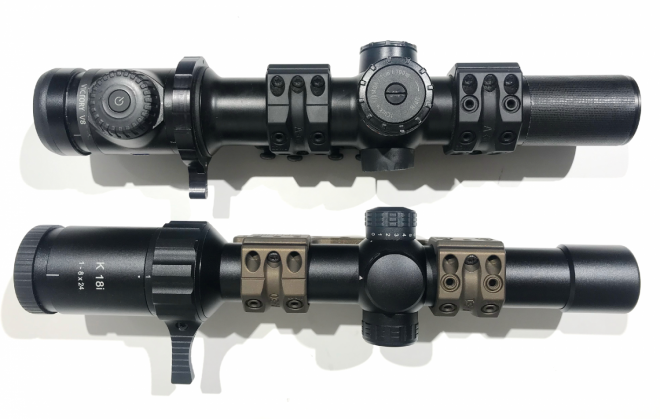
And a top view. K18i bottom. Note the difference in tube sizes.
Below: Back to the Kahles K18i – this is such a nice optic. Some ice on the water.
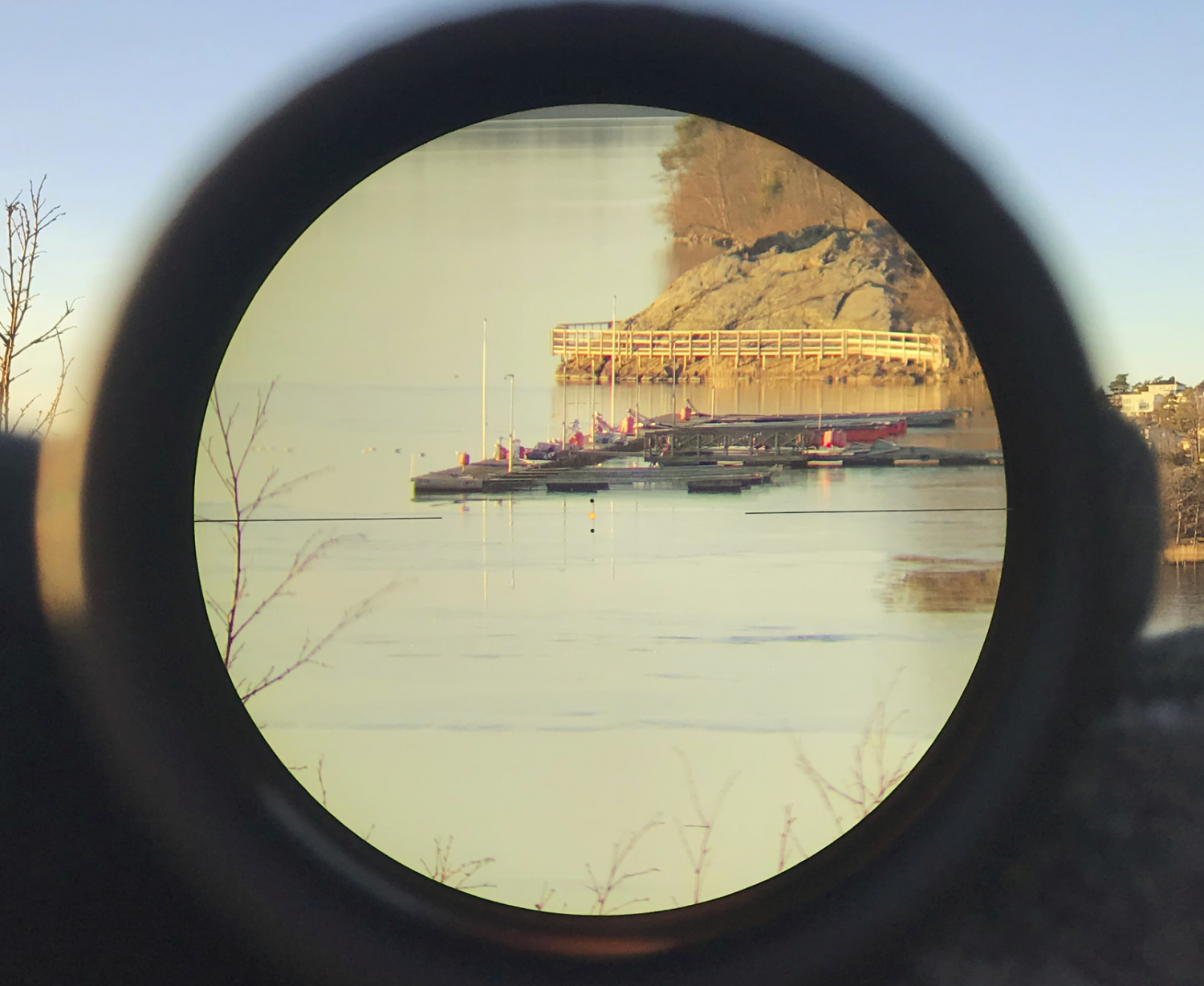
Below: Kahles K18i again. We have about 900 meters (990 yards to the footbridge. A guy in a kayak to the top left side. You can see what is going on far away. The quality of the picture is still acceptable far out to the sides. Notice how thin the horizontal lines are in the reticle.
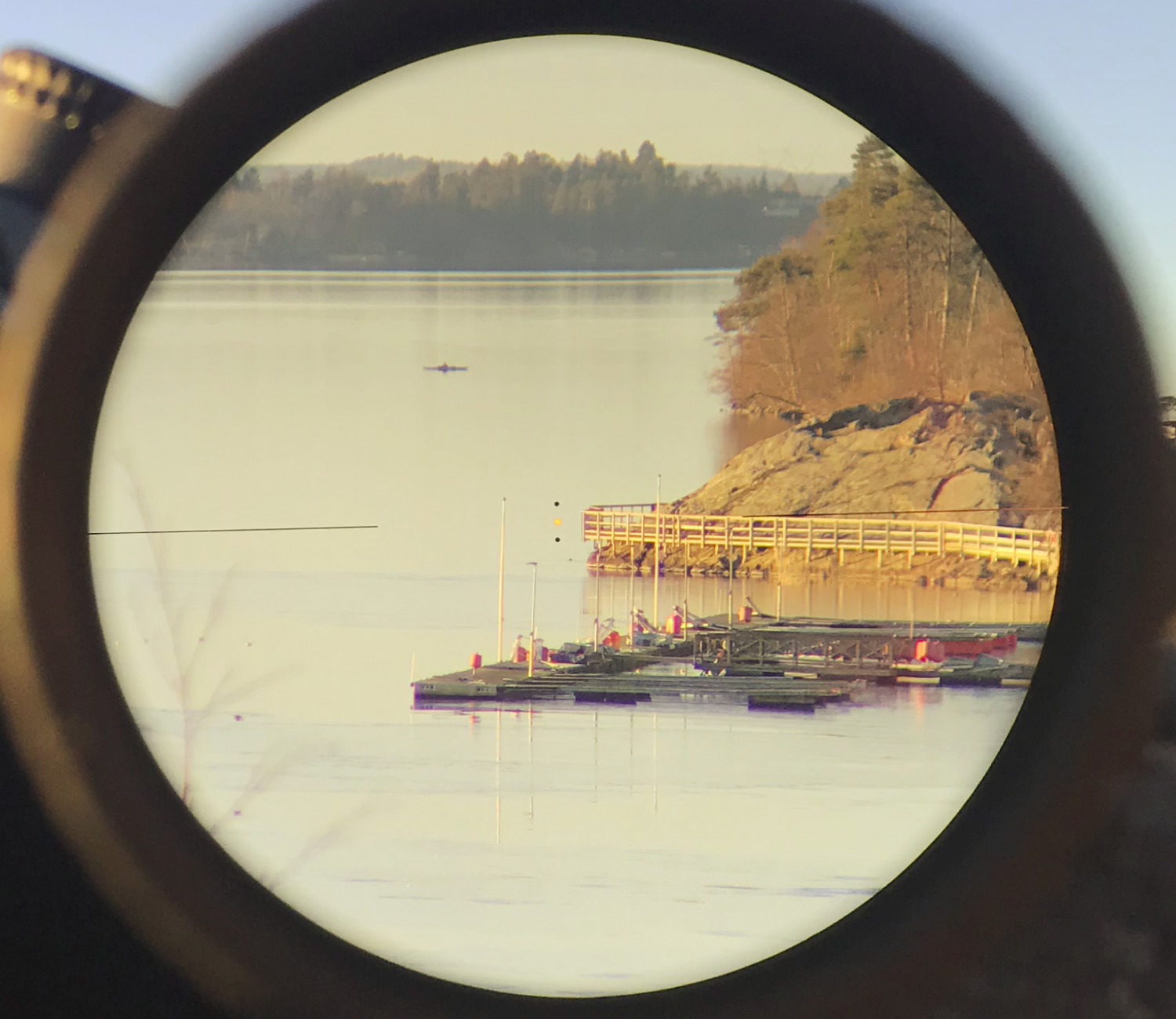
Below: The Budget Empire strikes again! Below is the Vortex Strike Eagle 1-8x as a reference. Still not too bad, right? But notice the Field Of View which almost appears to be about half of the Kahles. The tube feeling and the outer part of the lens appear blurred. It’s definitely harder to make out details in these pictures. Scroll up and check the Kahels again!
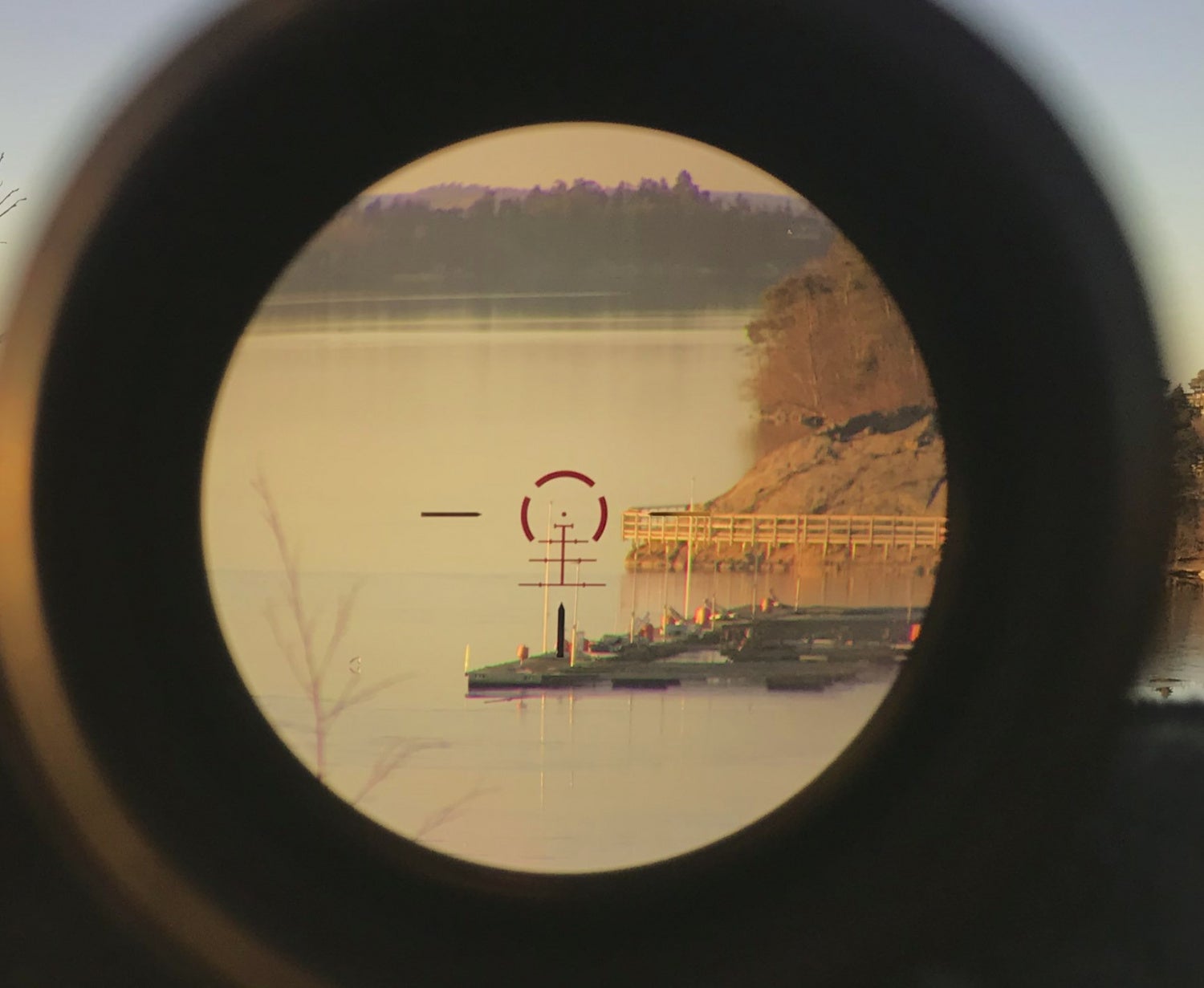
Vortex Strike Eagle 1-8x
The Zeiss V8 (left) and the Kahles K18i (right) overlooking the lake.
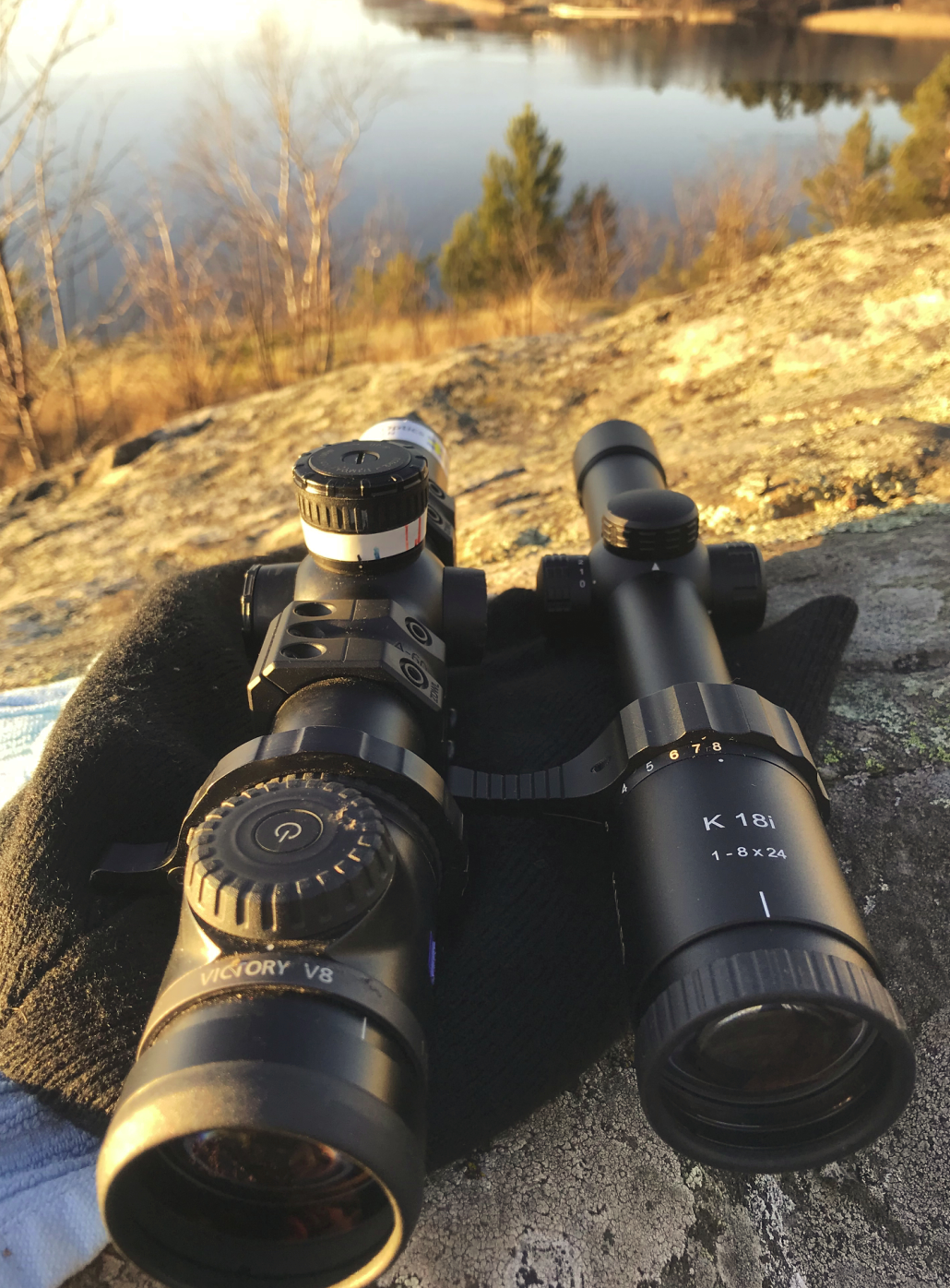
I doubt that anyone would use these types of scopes for long-range shooting, but for the sake of the review, it may be interesting to see how they behave. Below is the Kahles at 8x and the distance is about 1800 meters.
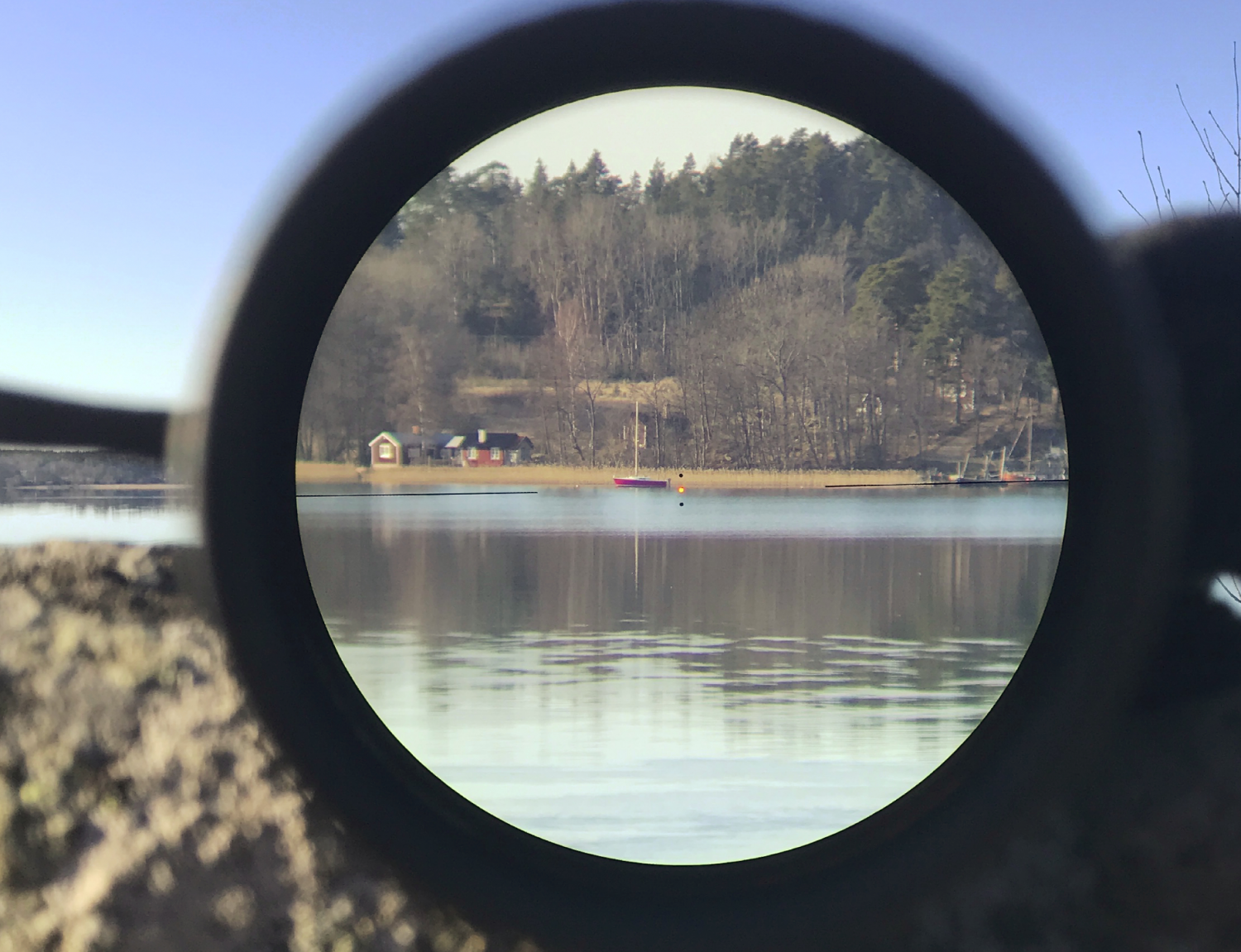
Below: Still 8 power magnification but the image is cropped on the computer to show more details. Excellent performance!
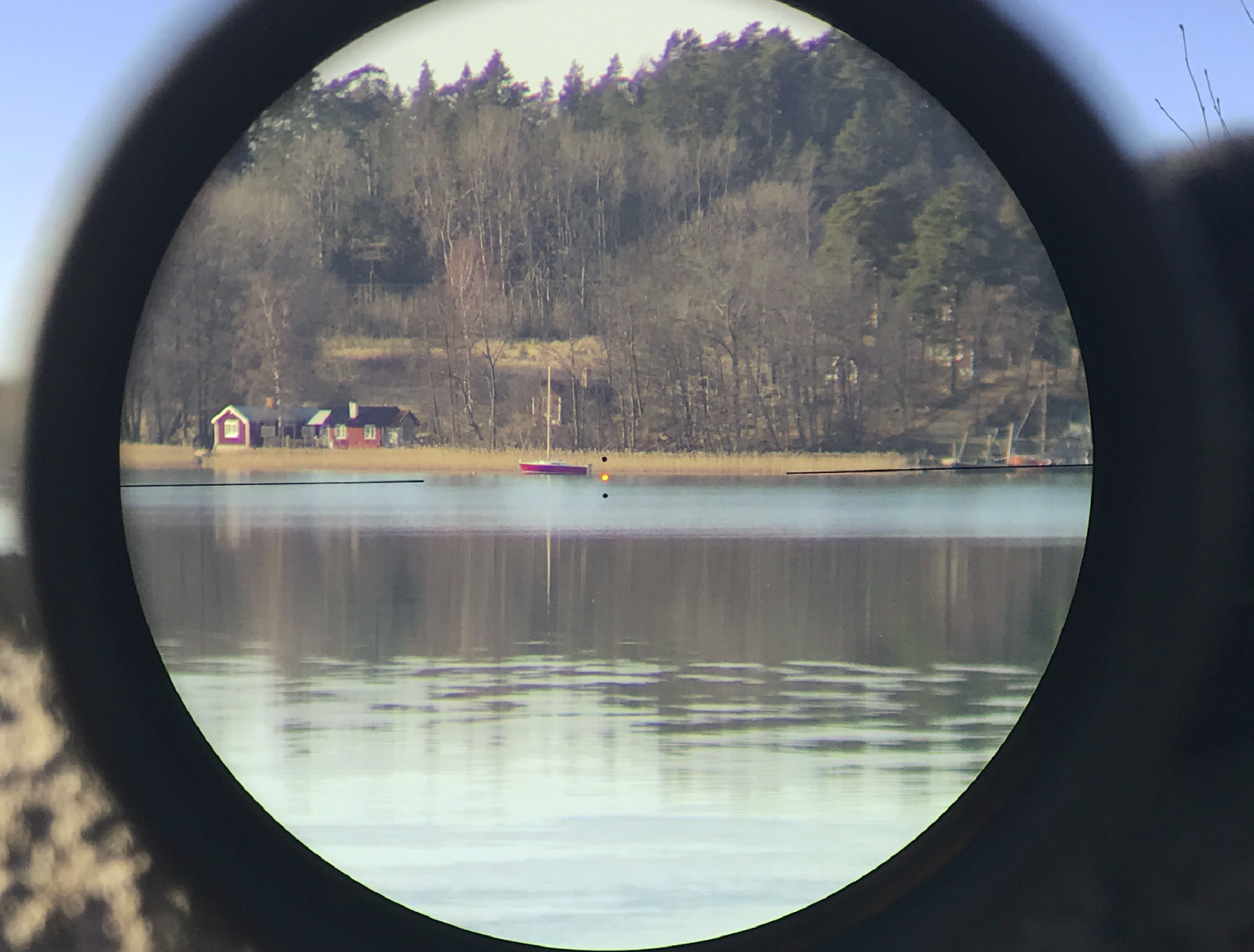
The reticle
This K18i has the IPSC reticle, called model 10661. According to Kahles, it has been developed in collaboration with the best pro-shooters in Europe and North America for intuitive and rapid target acquisition between 20–300 meters.
According to my (unverified) information, the top and bottom dots are 1 Mil (10 clicks) from the center dot.
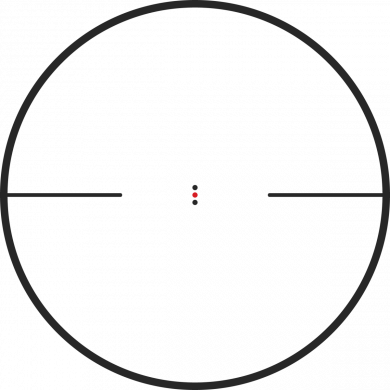
Model 10662 has the 3GR reticle which is more focused for longer-range 3 Gun shooting.
Here is one idea of how you can use the reticle. This is done in the app iStrelok Pro with the basis of a standard AR15. All the distances (in red) are in meters.
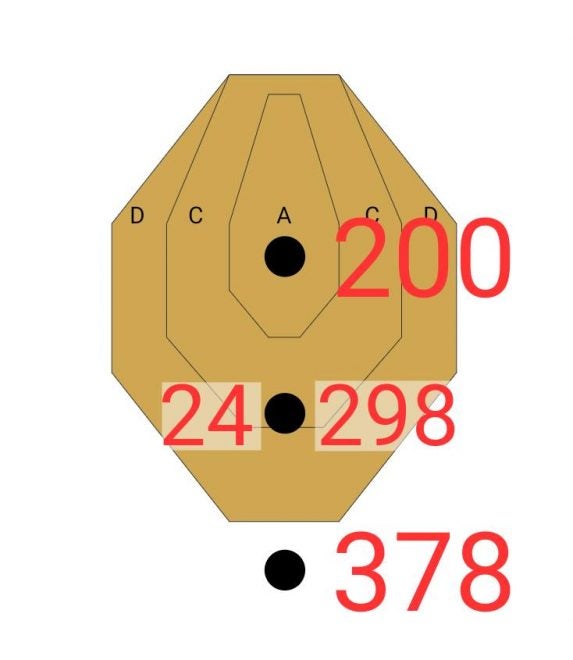
And here’s another, how it would appear looking at a target 300 meters away at 8 power. The bottom dot will be spot on, and the middle will be spot on at 38 and 199 meters. So roughly a 50-200 meter zero, and a quick hold-over for 300 meters. This would probably be my choice.
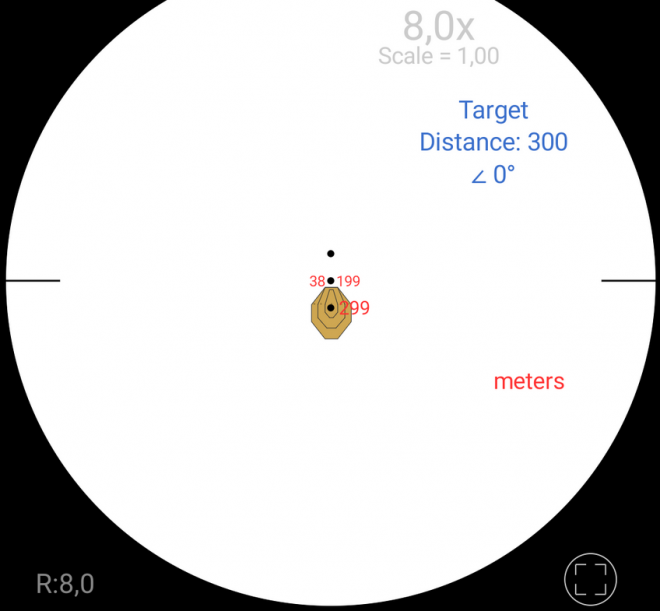
One drawback with the IPSC reticle is that it is difficult to see if there is a dark background. This isn’t really a fair picture, but I did it to show what happens if your dot is shut off.
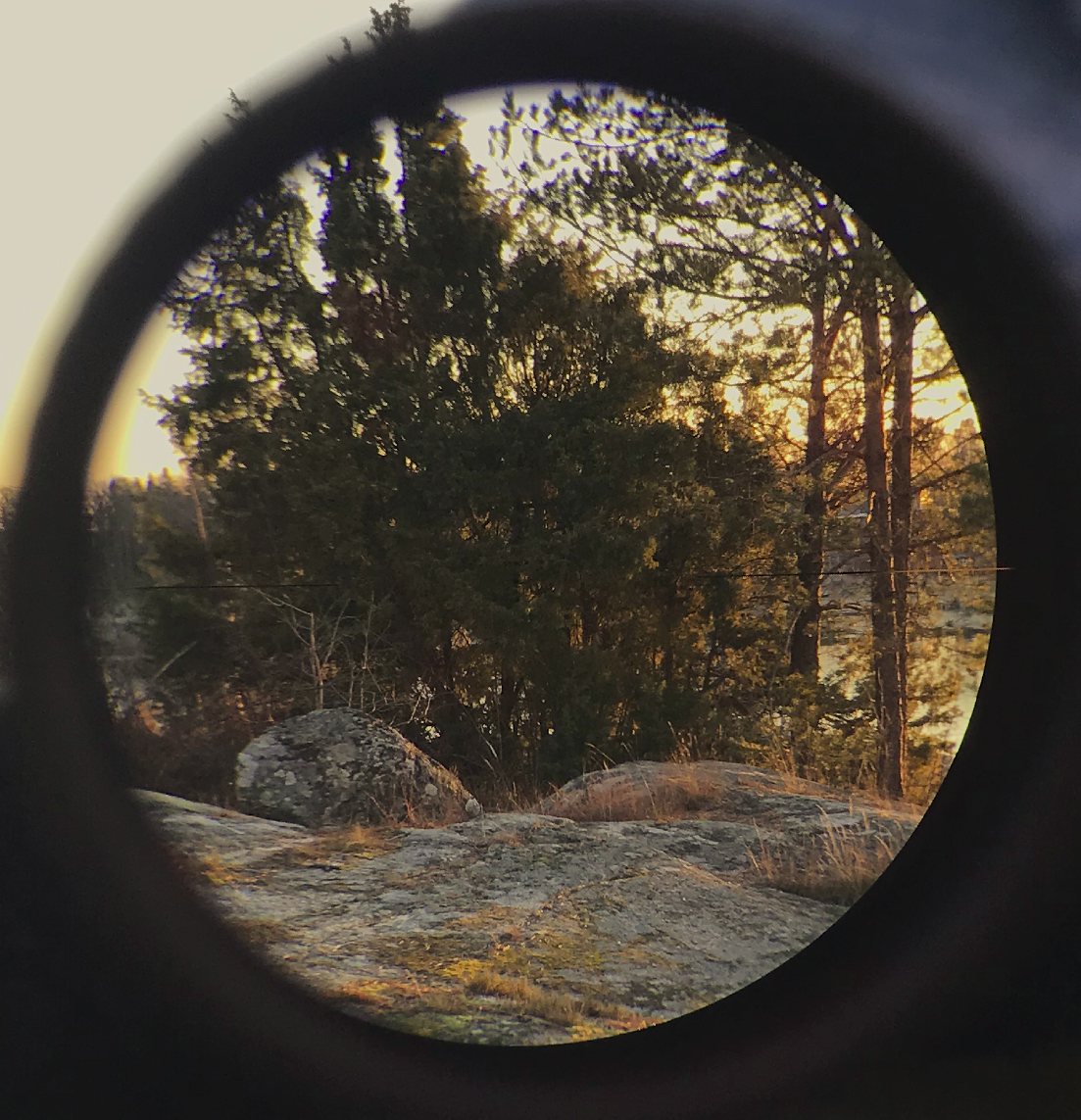
However, with the dot on, there’s no mistake as to where the center is. Finding the hold over or under might be trickier, as they’re not illuminated at all.
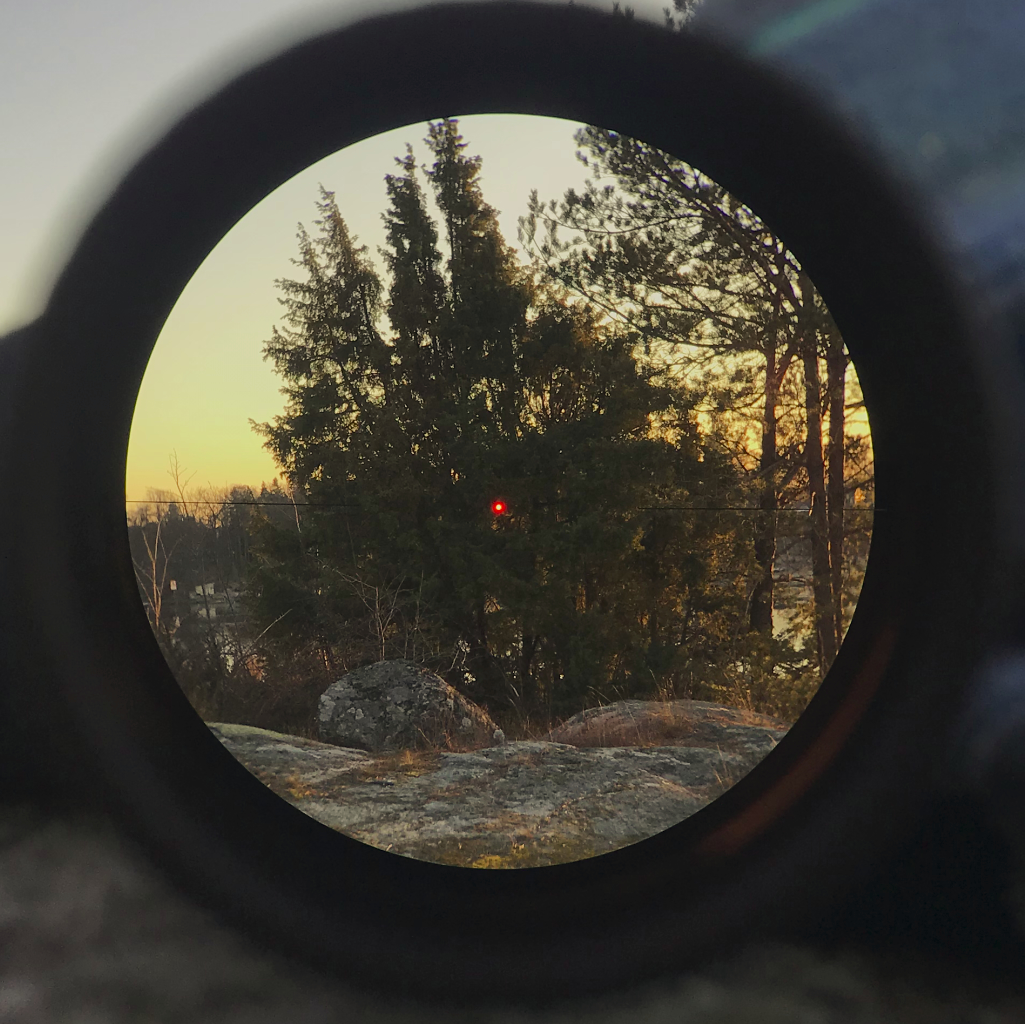
Another professional IPSC competitor from Germany helped me with these pictures from a potential real match in Germany.
I took some pics of the K18i last time when I was in Philippsburg for the PCC Match. Just to show the reticle on 8x on the distance.
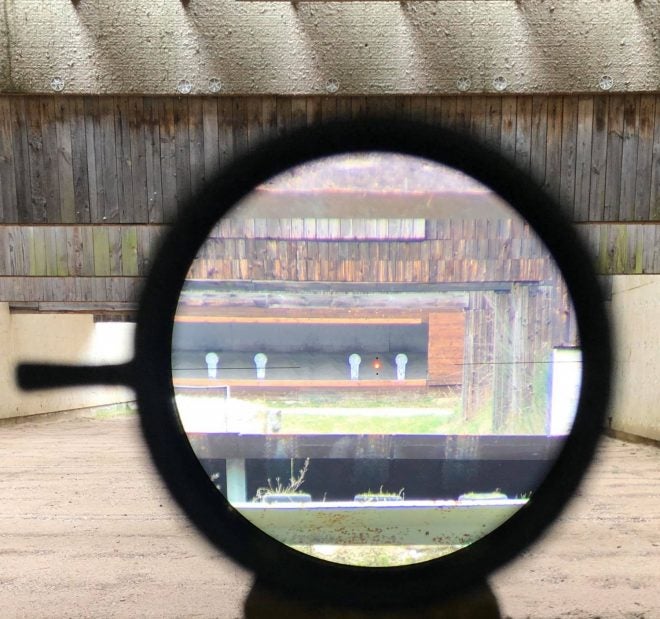
I included all four pictures to show the differences with various illumination and over or beside the steel targets.
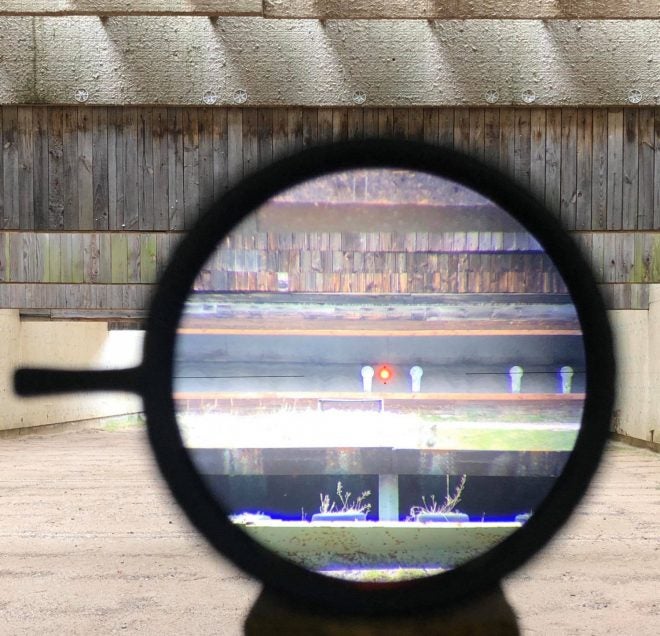
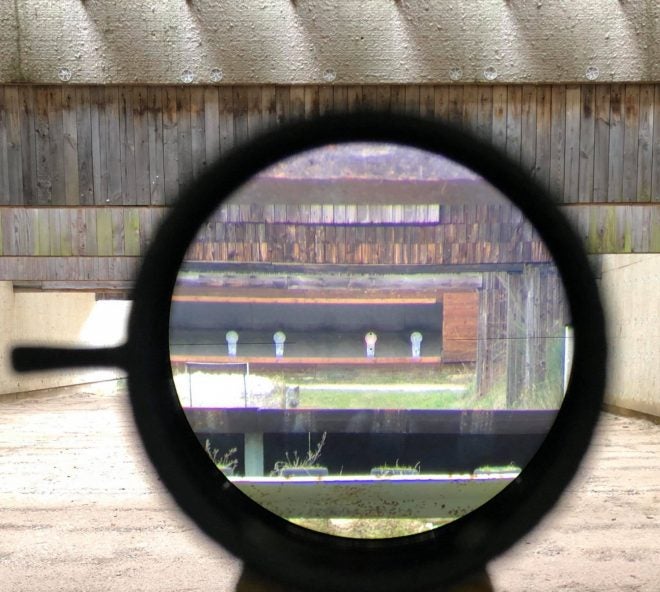
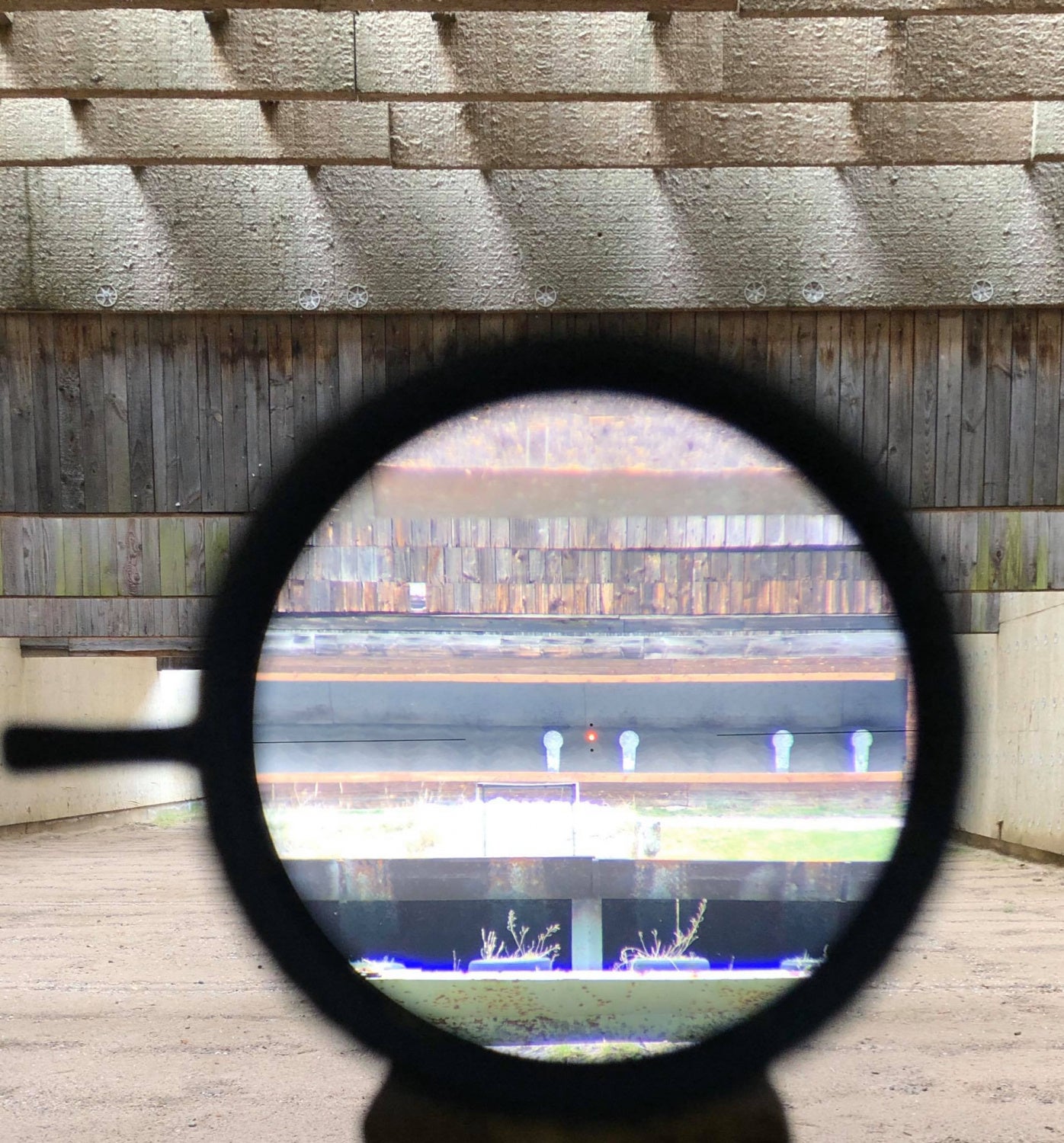
K18i Technical Specification
Magnification: 1-8x
Objective lens diameter: 24 mm
Eye relief: 95 mm
Field of view: 42,5-5,3 m/100 m
Diopter compensation: +2/–3 dpt
Twilight factor (DIN 58388): 2,9-13,9
Impact correction per click: .1 MRAD
Adjustment range (E/W): 2.4 / 2.4 m
Parallax adjustment: 100m (fixed)
Tube diameter: 30 mm
Length: 300 mm
Weight: 555 g
Focal plane: 2
Illuminated: Yes
Warranty: 10 years
The Spuhr mount
The scope mount is worth an extra mentioning. For this review, we used a Spuhr SP-3022 Cantilever mount. To make it stand out more, but not too much, we had it Cerakoted in Midnight Bronze (Color code H-294 Cerakote) and the result was astonishingly good. Depending on the ambient lighting, there is a metallic effect, albeit a bit difficult to capture on camera.
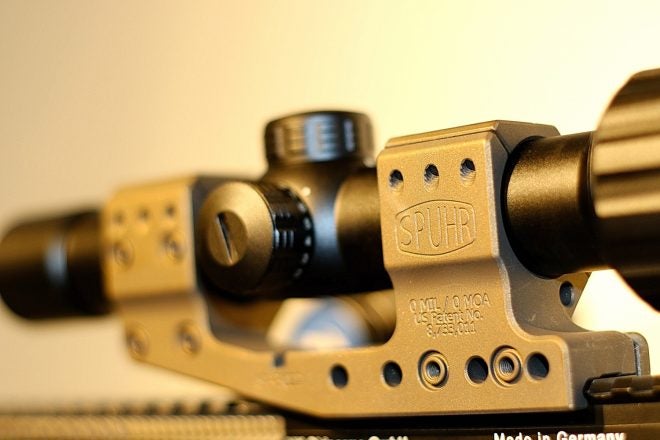
For fast shots at close range, you can mount a red dot, like this Aimpoint H2 on the A-0025 adapter.
This is very common amongst dynamic shooters, but great for hunting as well.
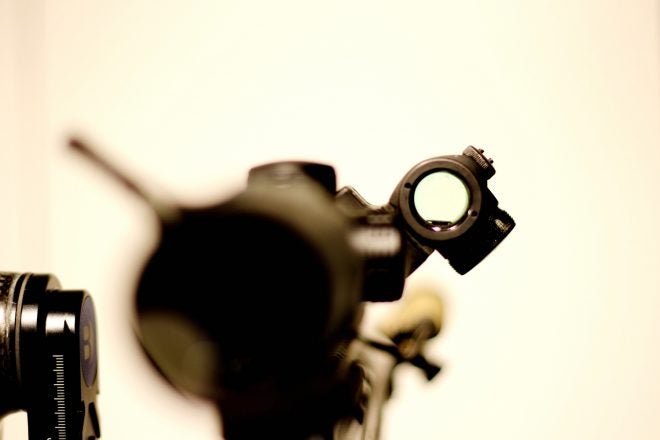
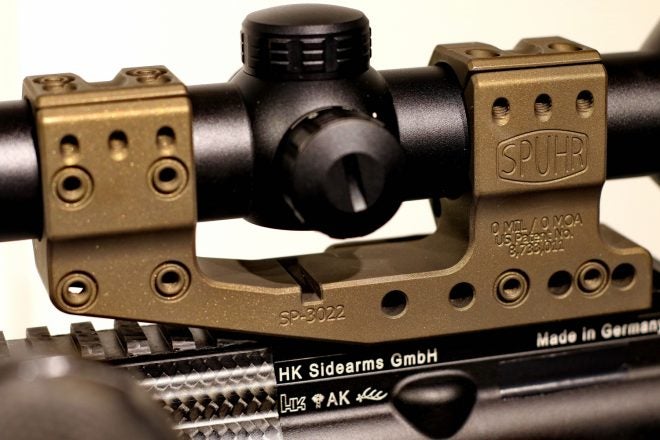
The side clamps are marked to make sure you torque the screws in the same sequence each time to maximize repeatability if you move the mount on and off.
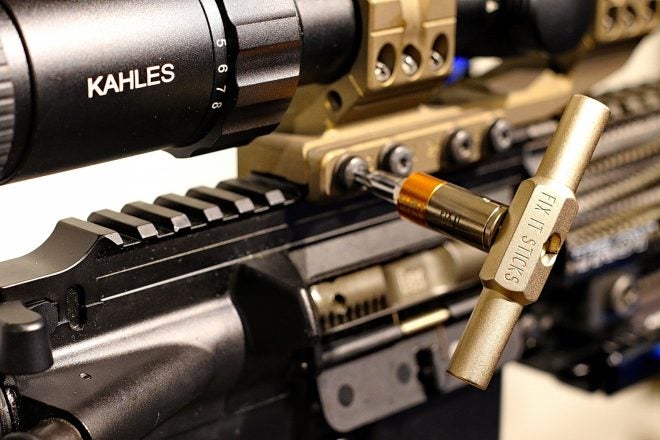
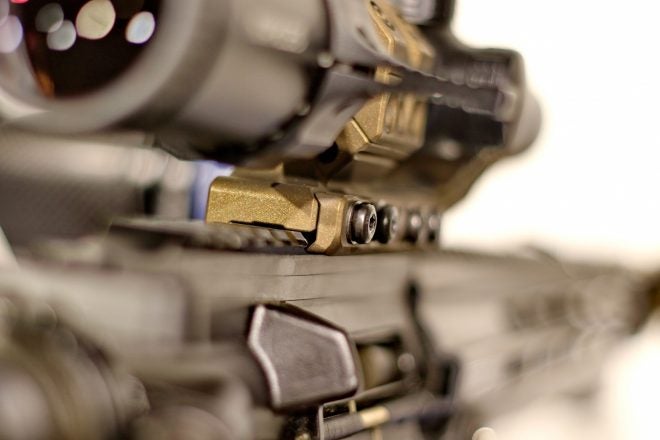
If you think that the Spuhr ISMS design is too bulky you can choose the slimline instead.
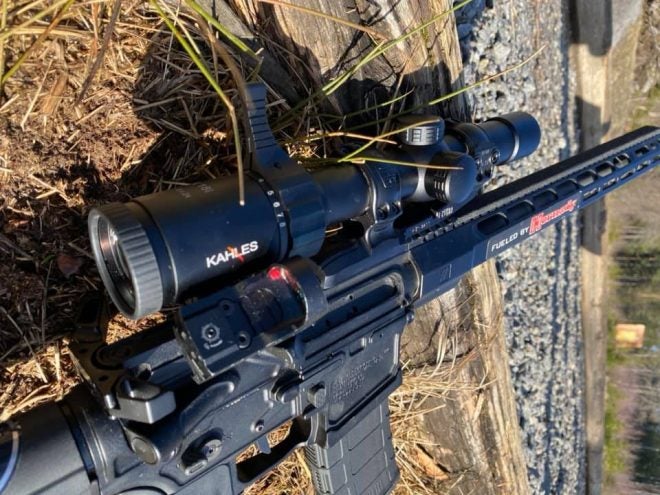
CONCLUSION
You can’t really go wrong with the K18i. It offers great quality as well as sharpness and clarity in a slim package. The field of view is among the best in the class, an important feature when you’re going to the next target.
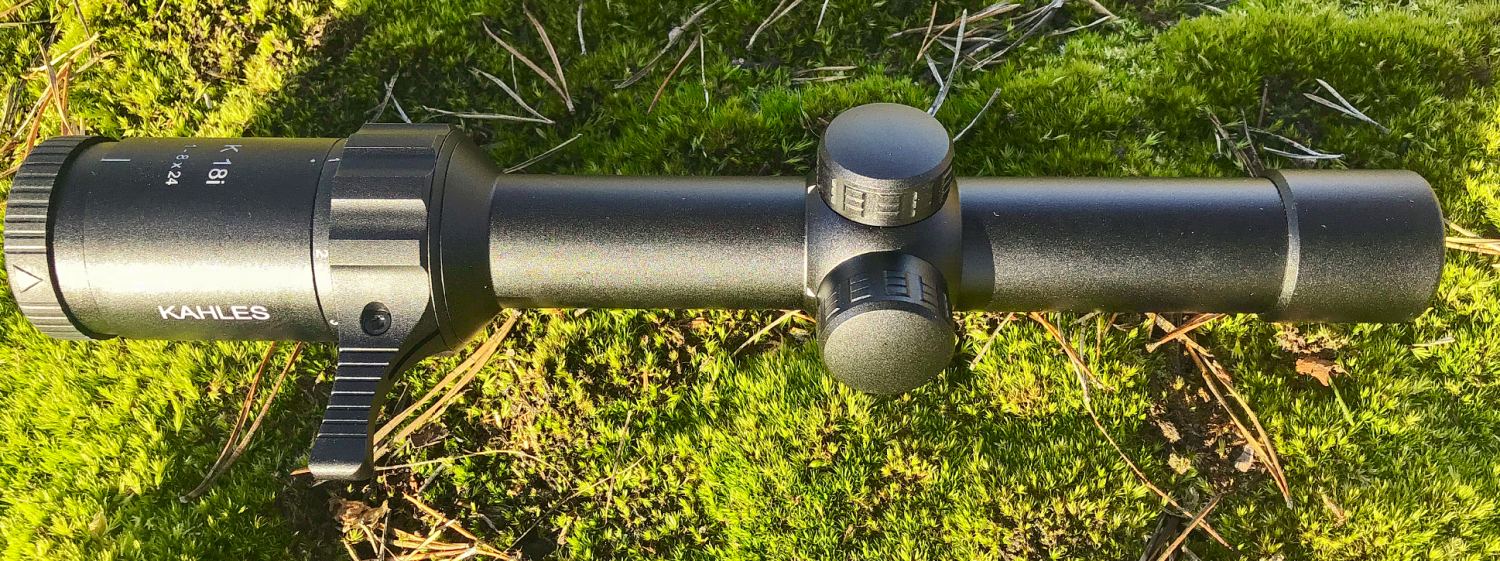
The lenses are close to distortion-free and give the competitor a seamless transition between his peripheral vision and the scope image (on 1 power, of course).
If you have decided to go for it, then you have the choice of two reticles. Personally, I would probably go for the 3GR reticle and not the one tested here.
The retail price in Europe is around € 2,500 incl. VAT. That’s a lot of money, but it’s also what you would expect to pay in this market segment.
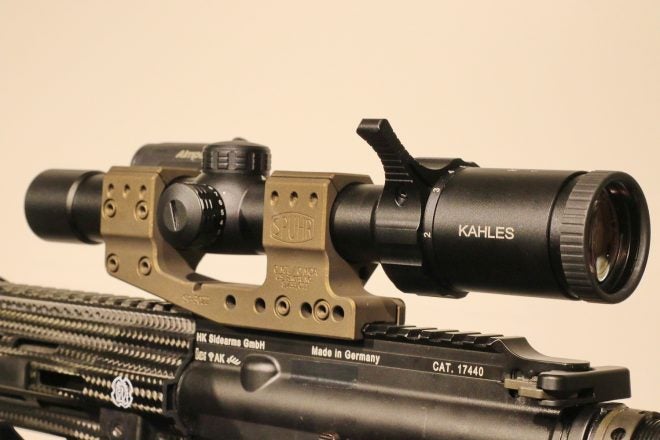
Pros +
- High-quality optics, superior to most.
- Great Field Of View.
- The dot can be set really bright if you need it.
- Lightweight and slim
- Forgiving eye box
- Two sizes of throw levers included, user-selectable and free positioning
Cons –
- The IPSC reticle may not be to everyone’s liking. The horizontal lines are almost too thin for the eye to spot them.
- The slim look may not look as impressive as other designs (if you care about what others think).
- It comes at a price.
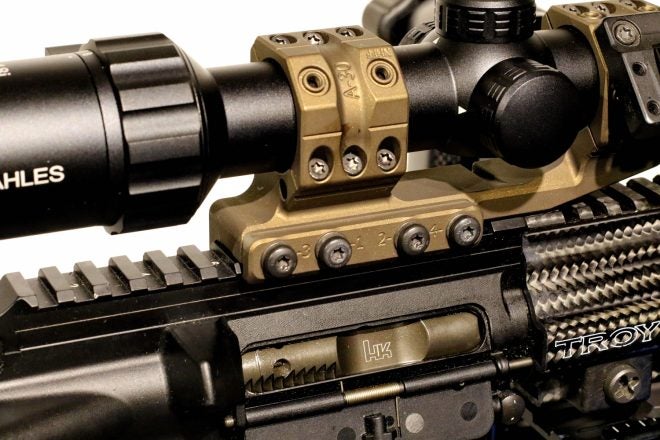
Thanks very much to Kahles Austria for letting The Firearm Blog borrow this riflescope. Thanks to Spuhr in Sweden for supplying a fitting scope mount. You can find the Kahles K18i product page here.
We hope you have enjoyed reading this review and comparison with some other riflescopes on the market. These reviews take a lot of time and resources to make and we look forward to your comments. Please feel free to share this with friends on social media.
We are committed to finding, researching, and recommending the best products. We earn commissions from purchases you make using the retail links in our product reviews. Learn more about how this works.
 Your Privacy Choices
Your Privacy Choices
